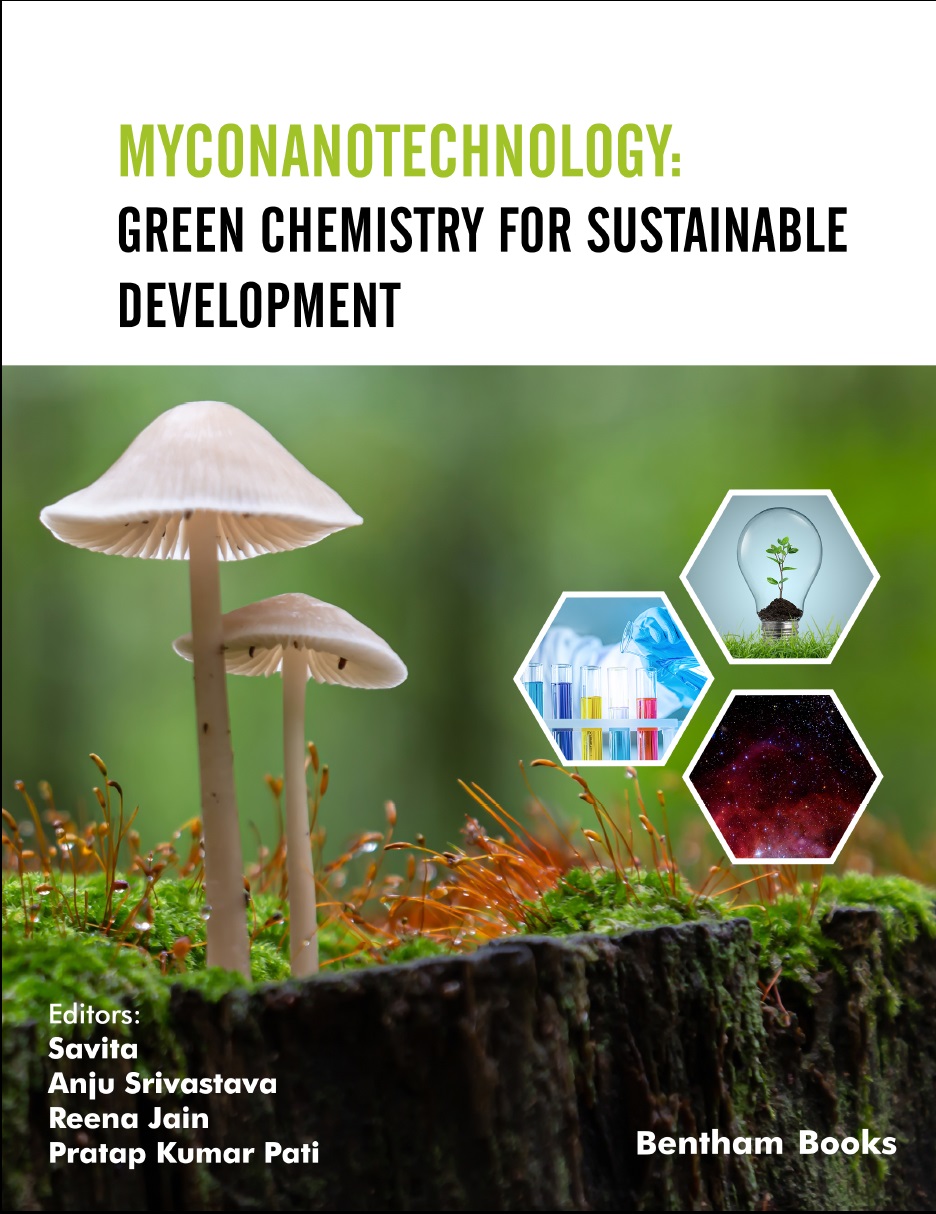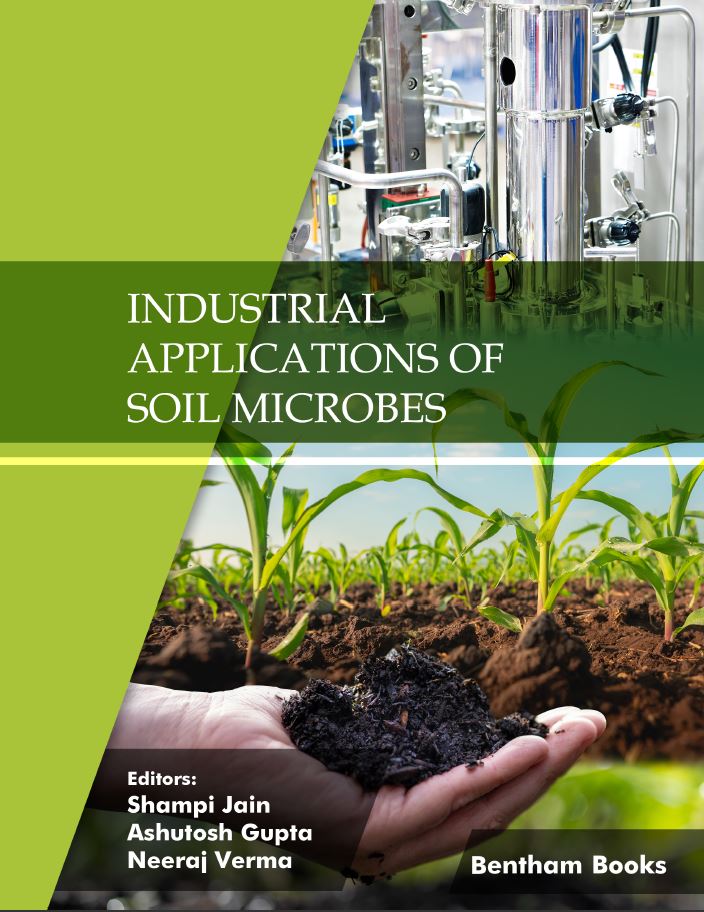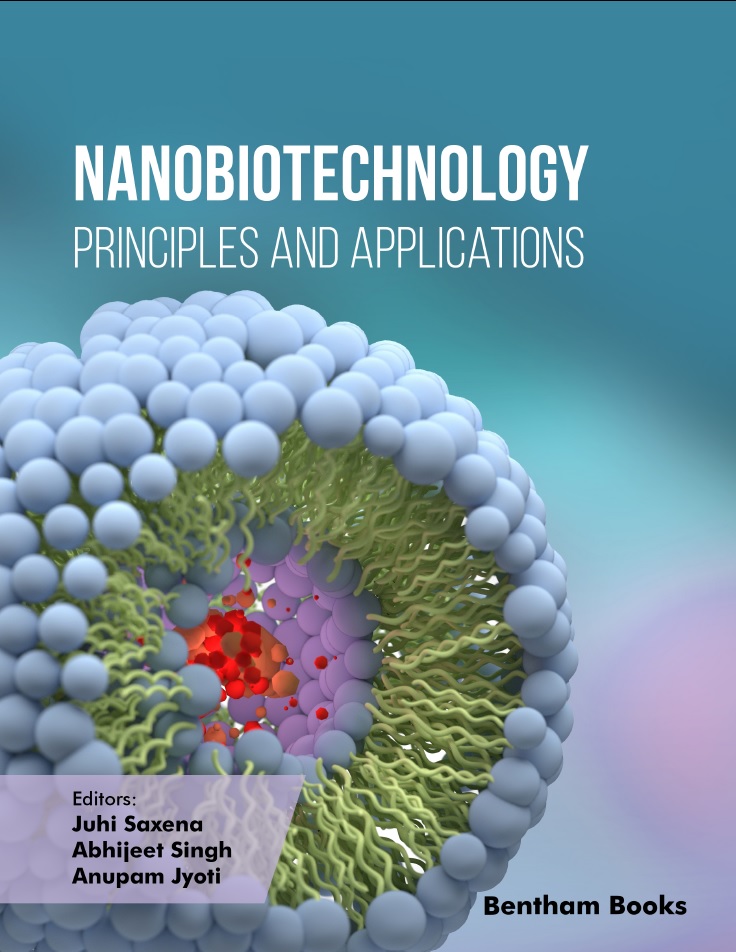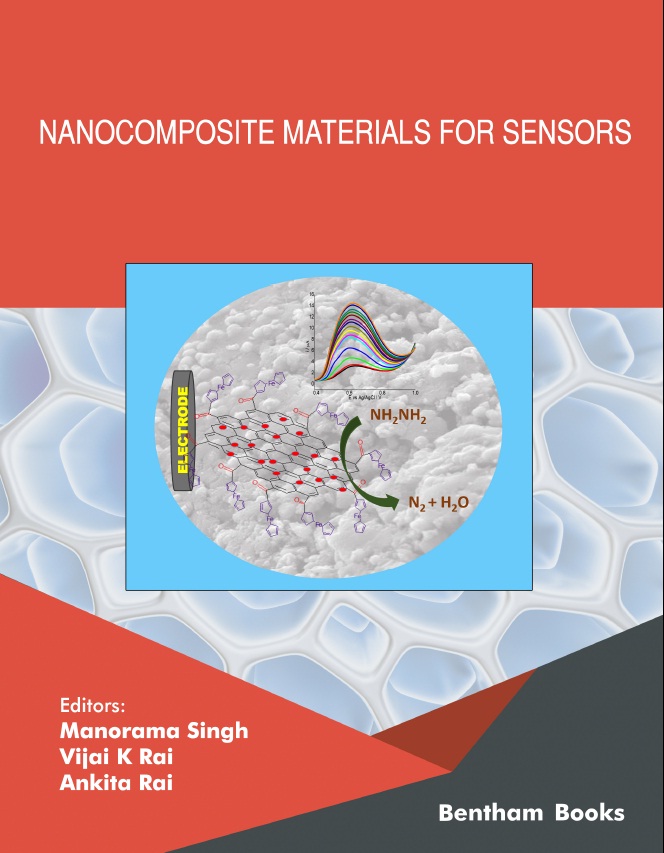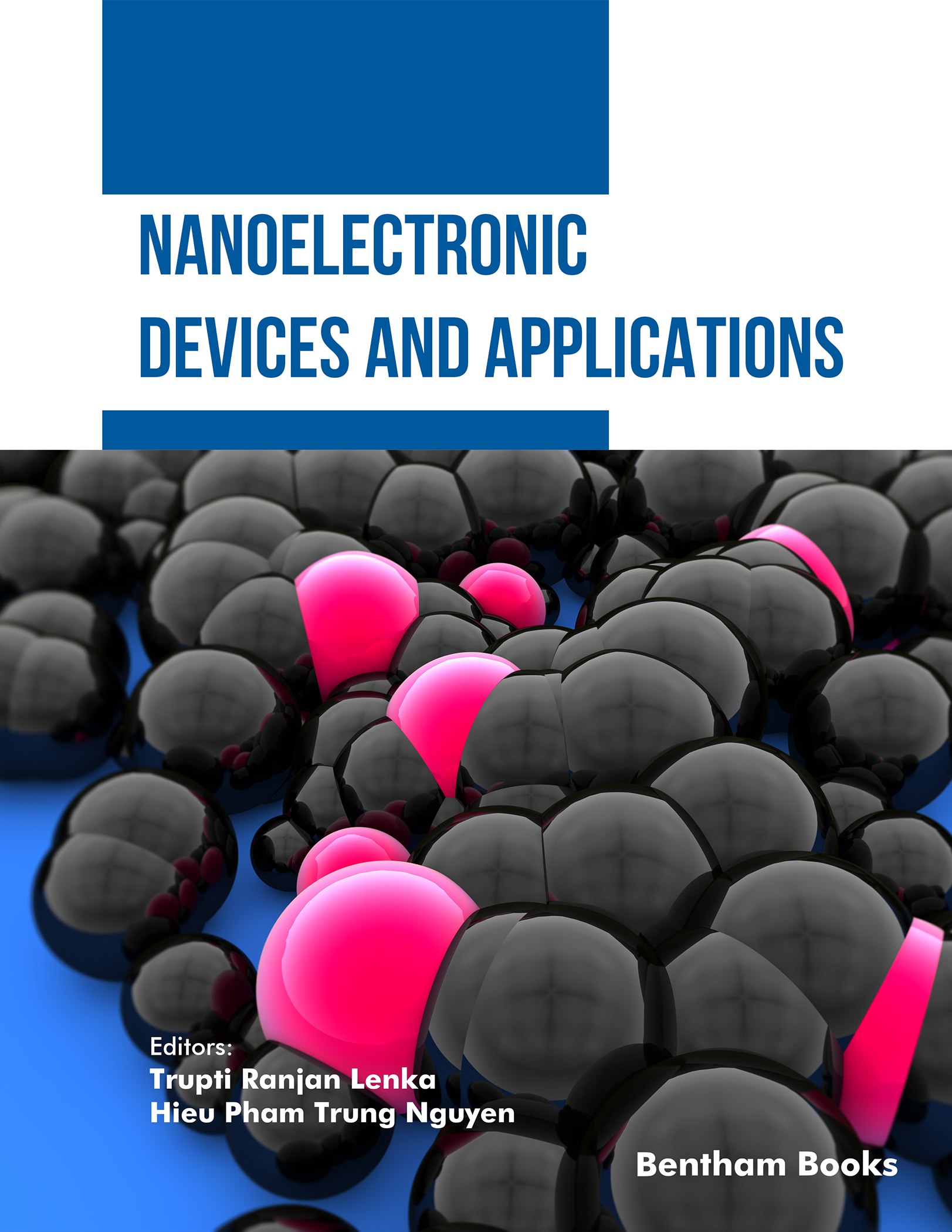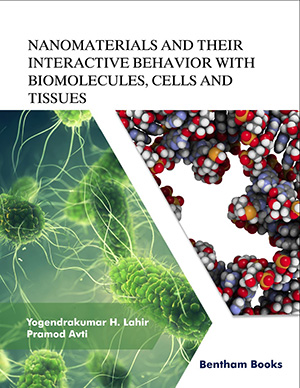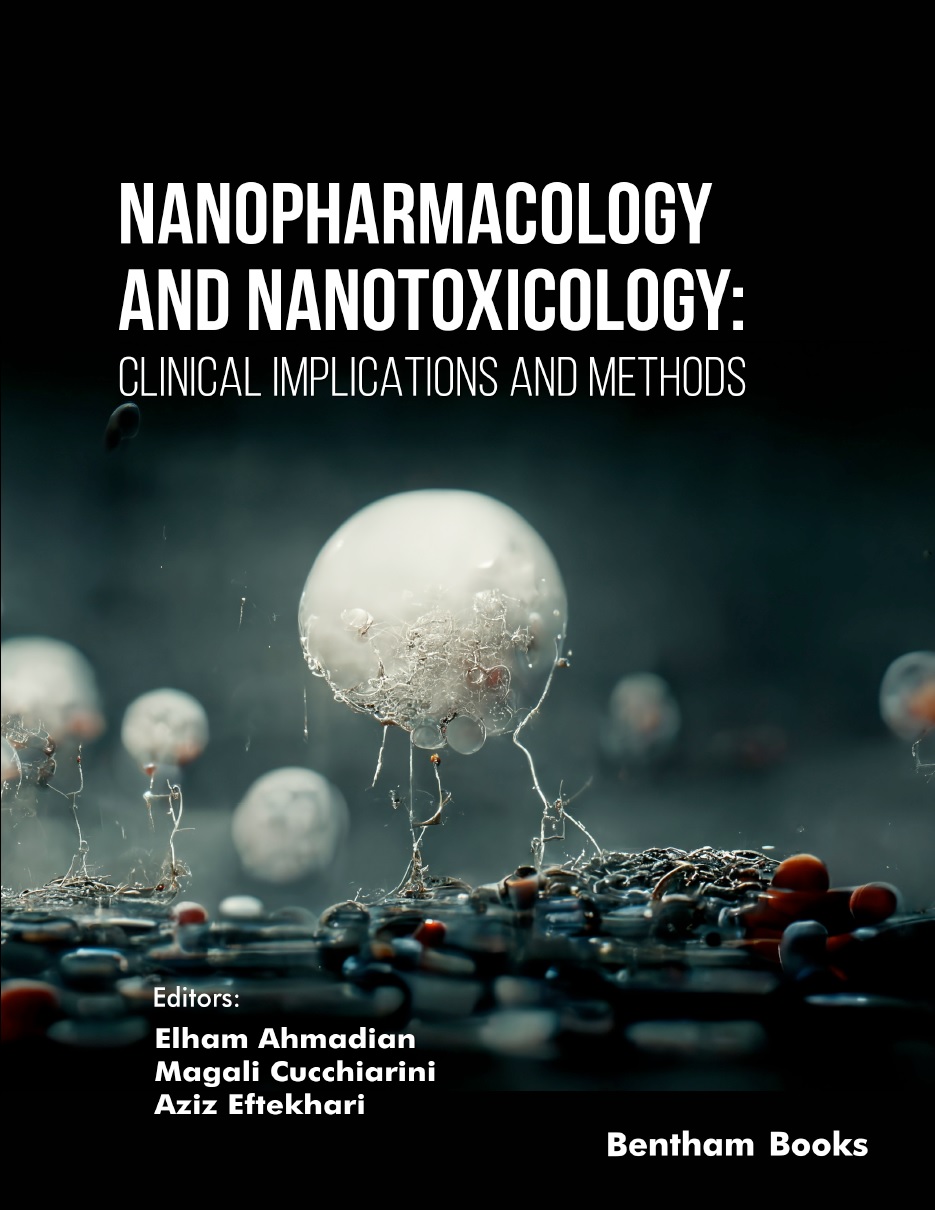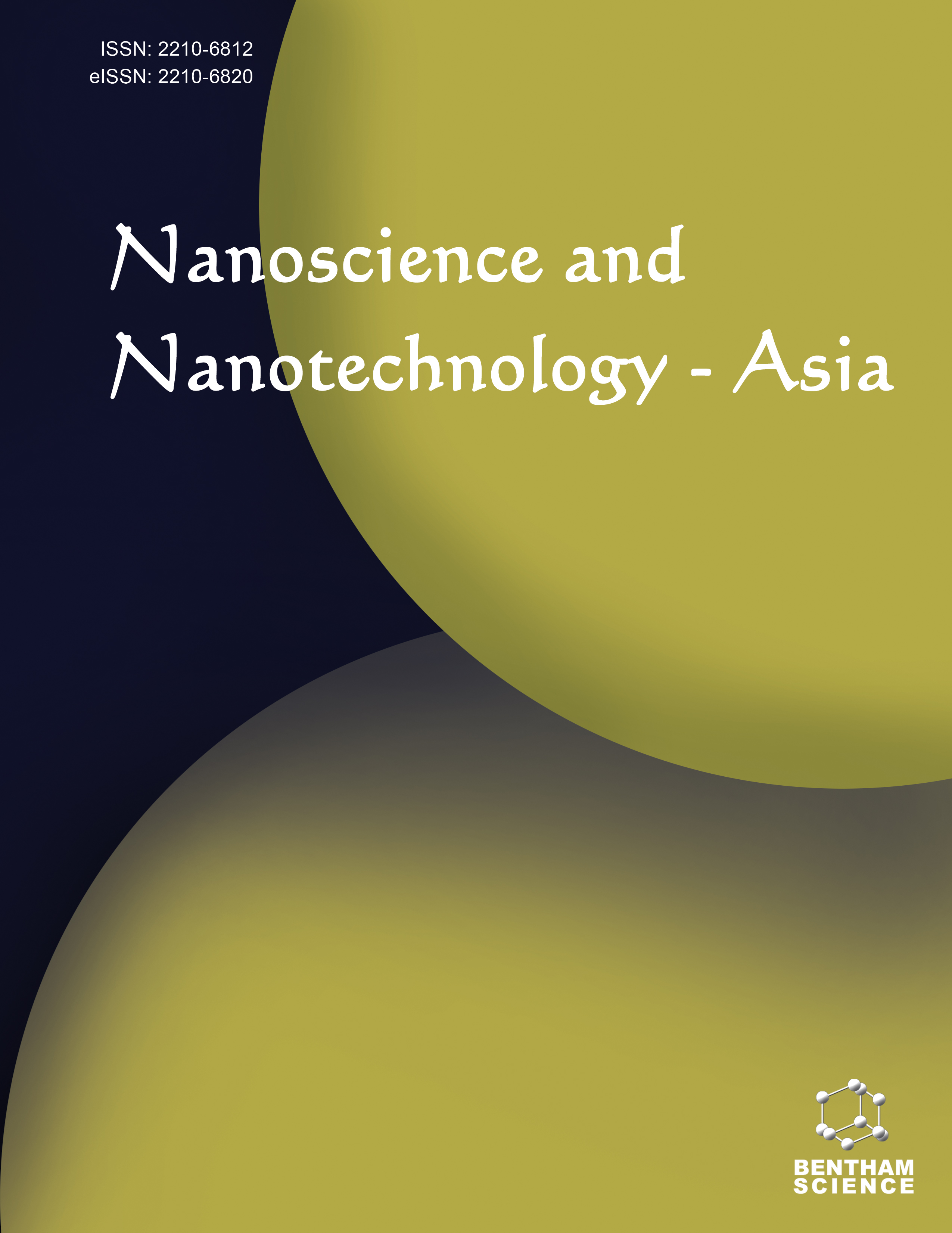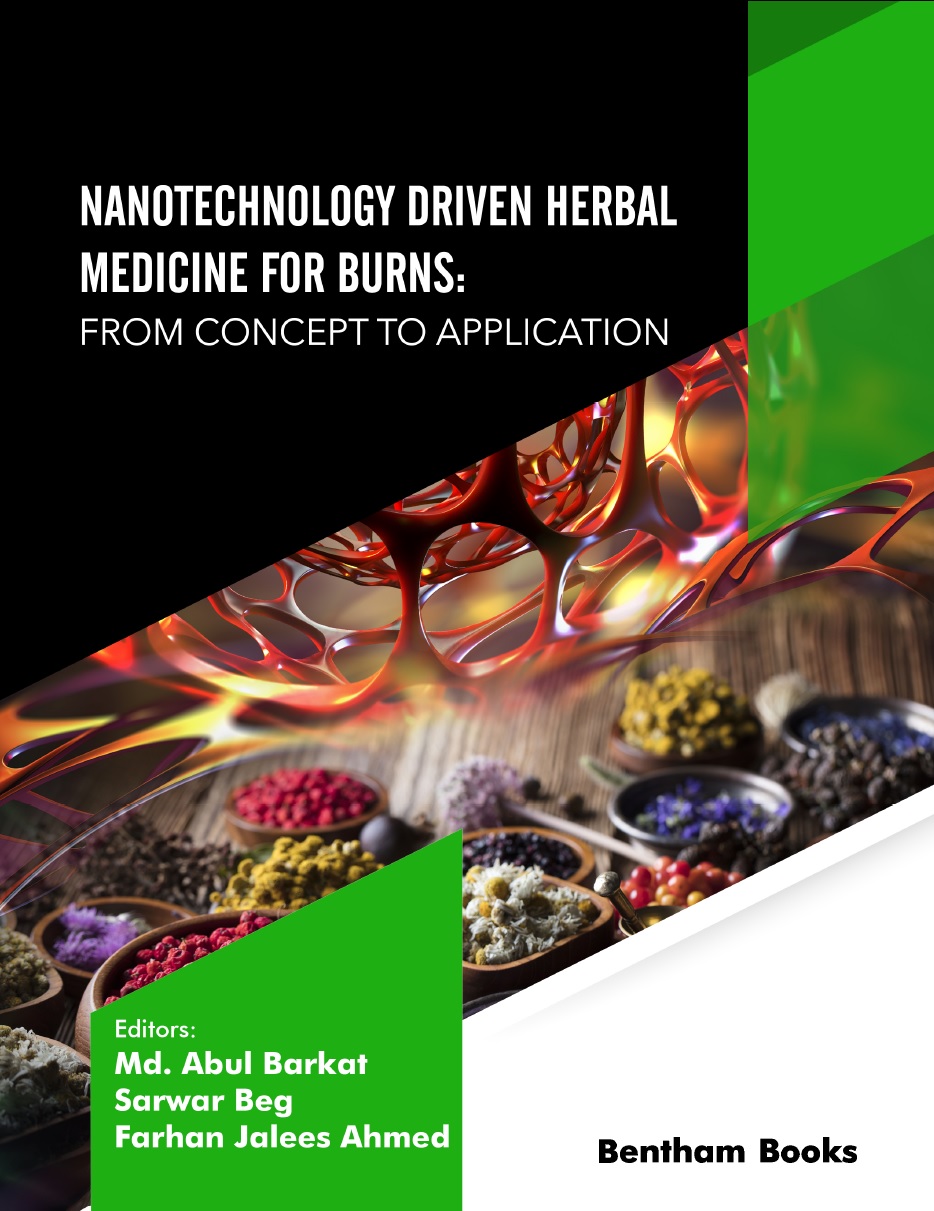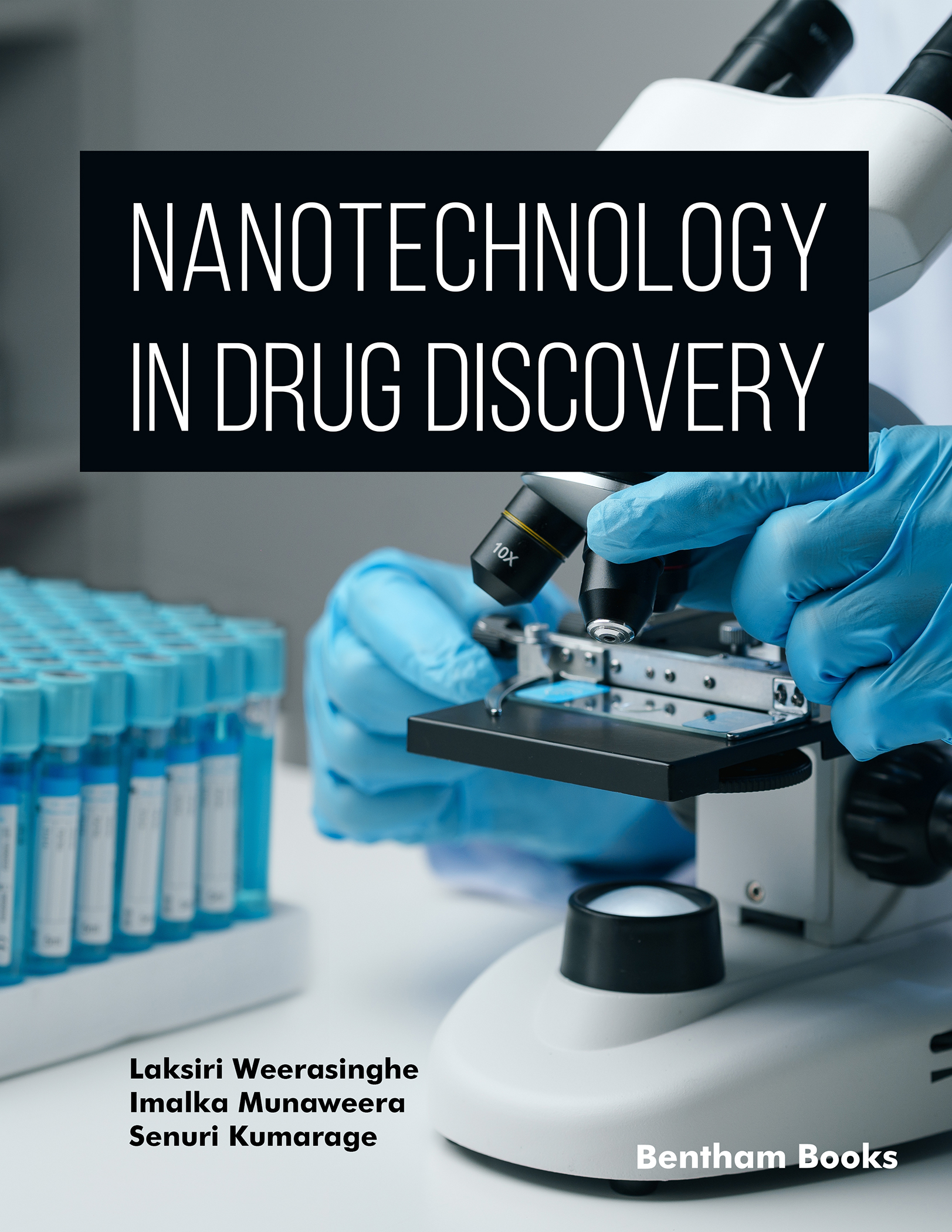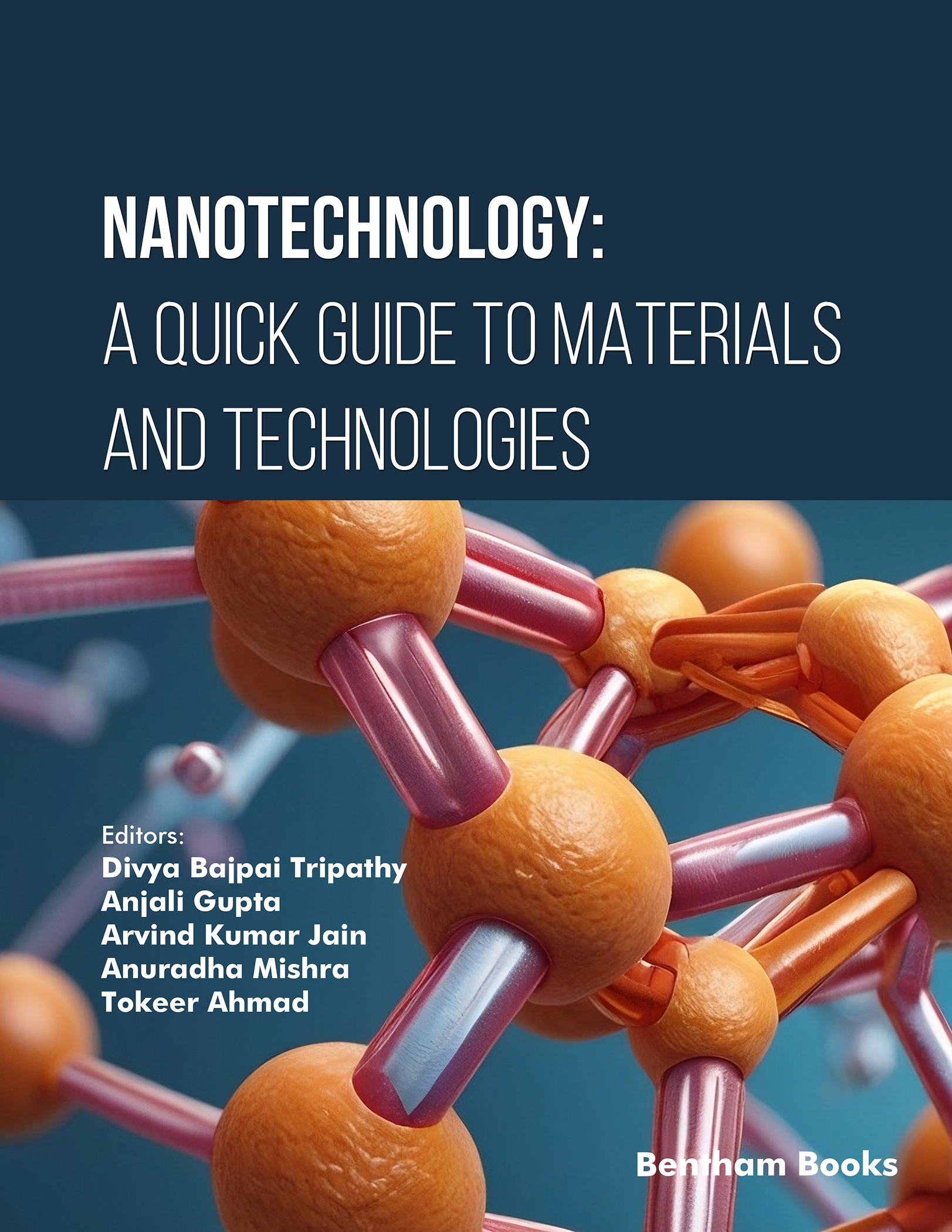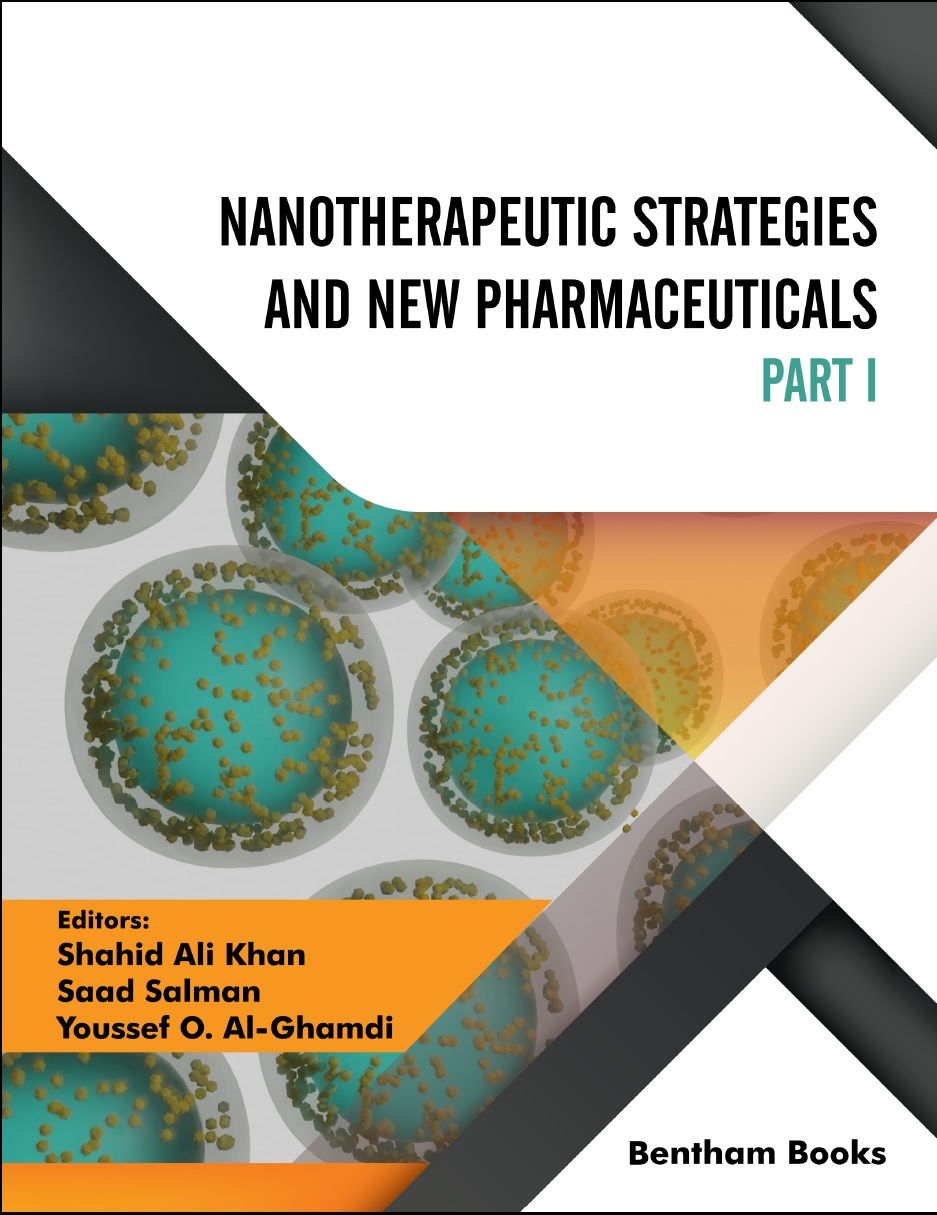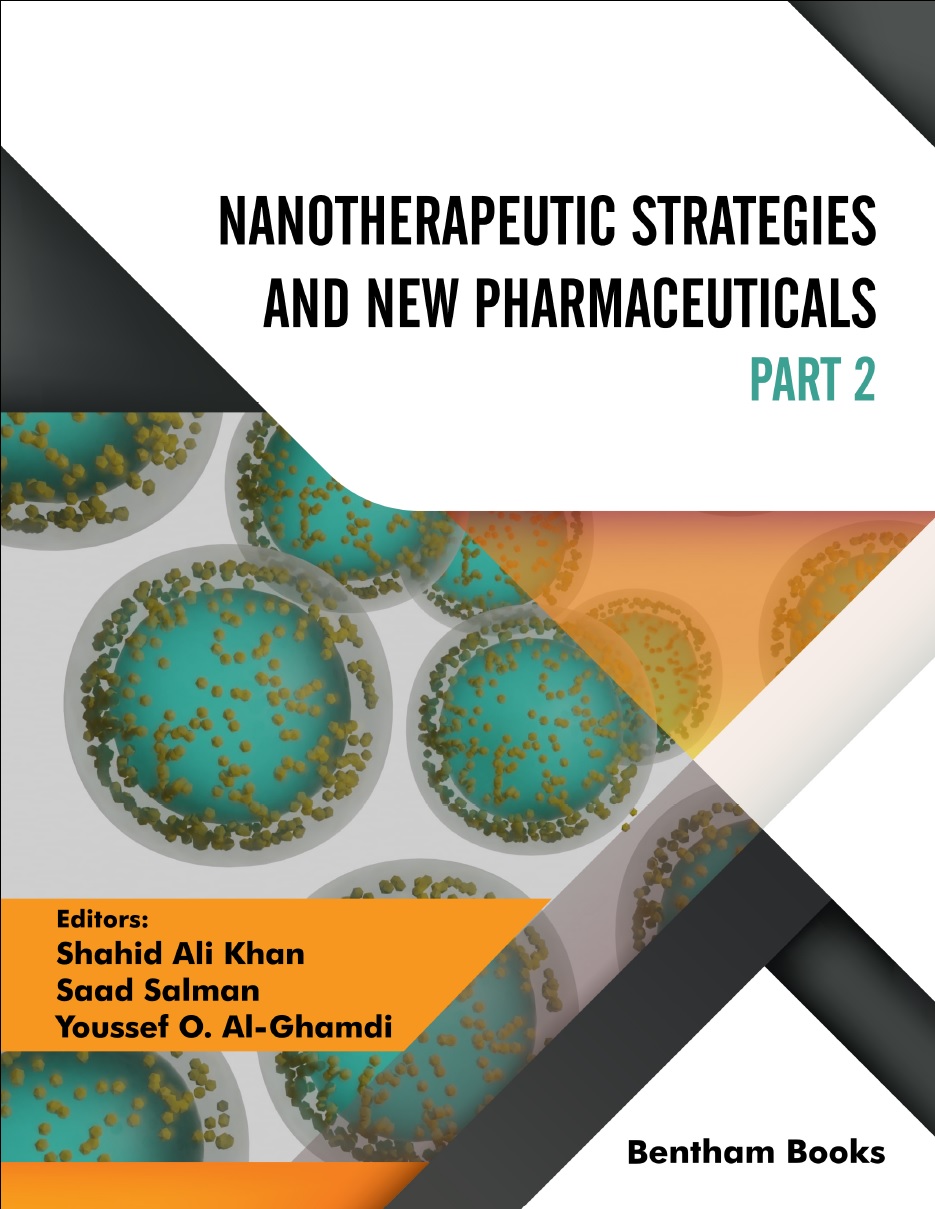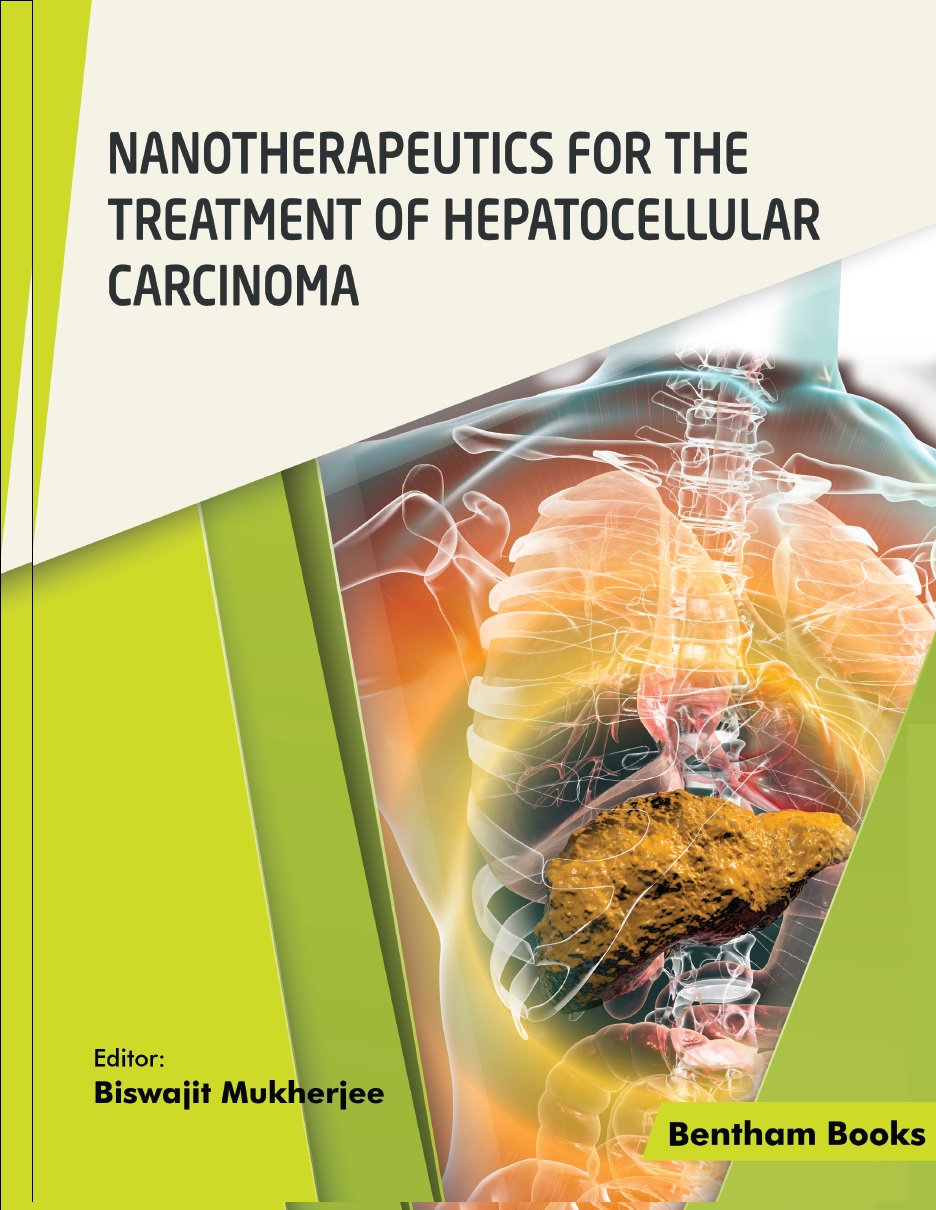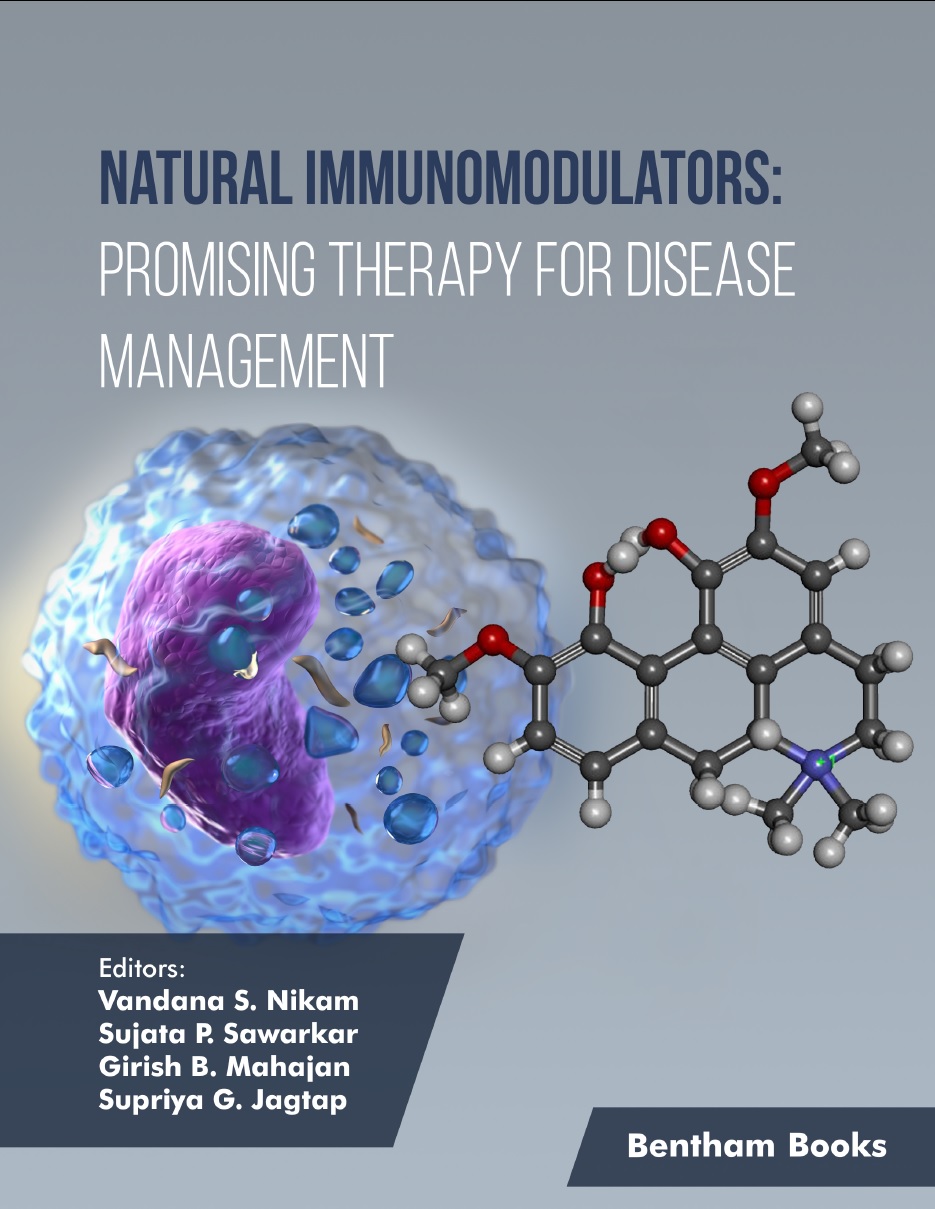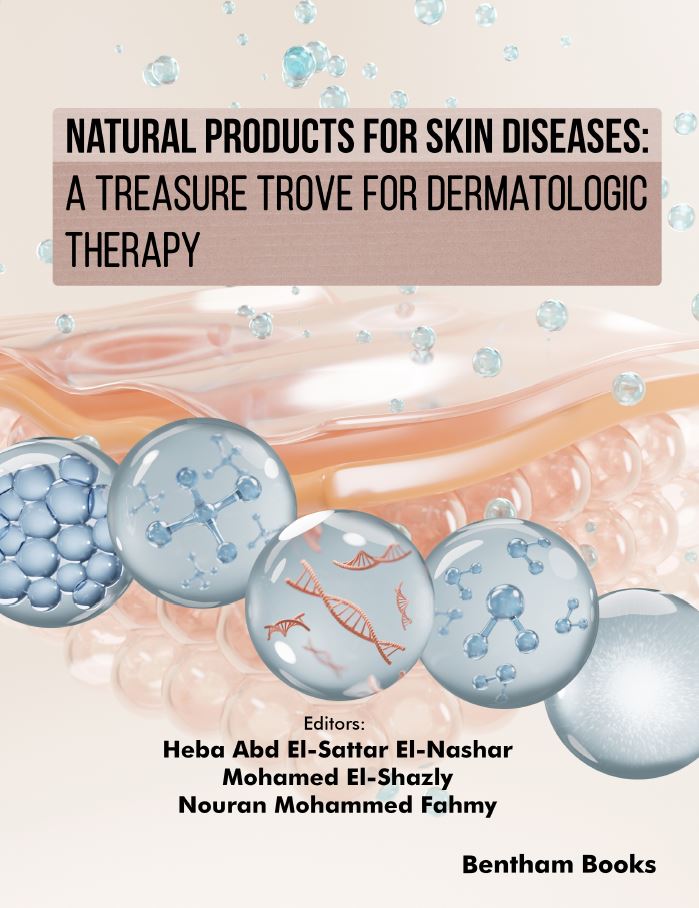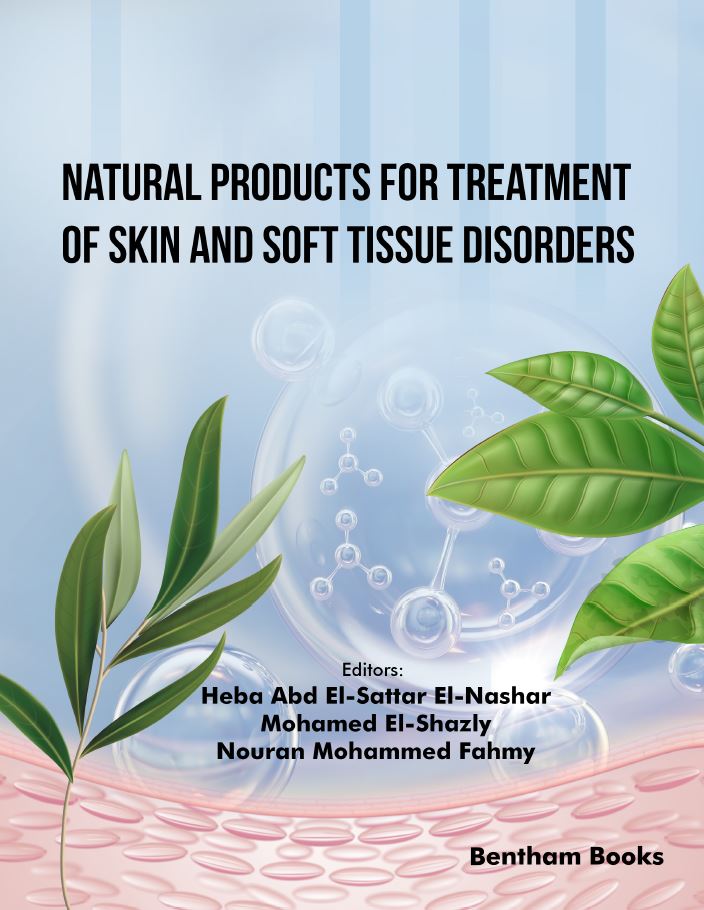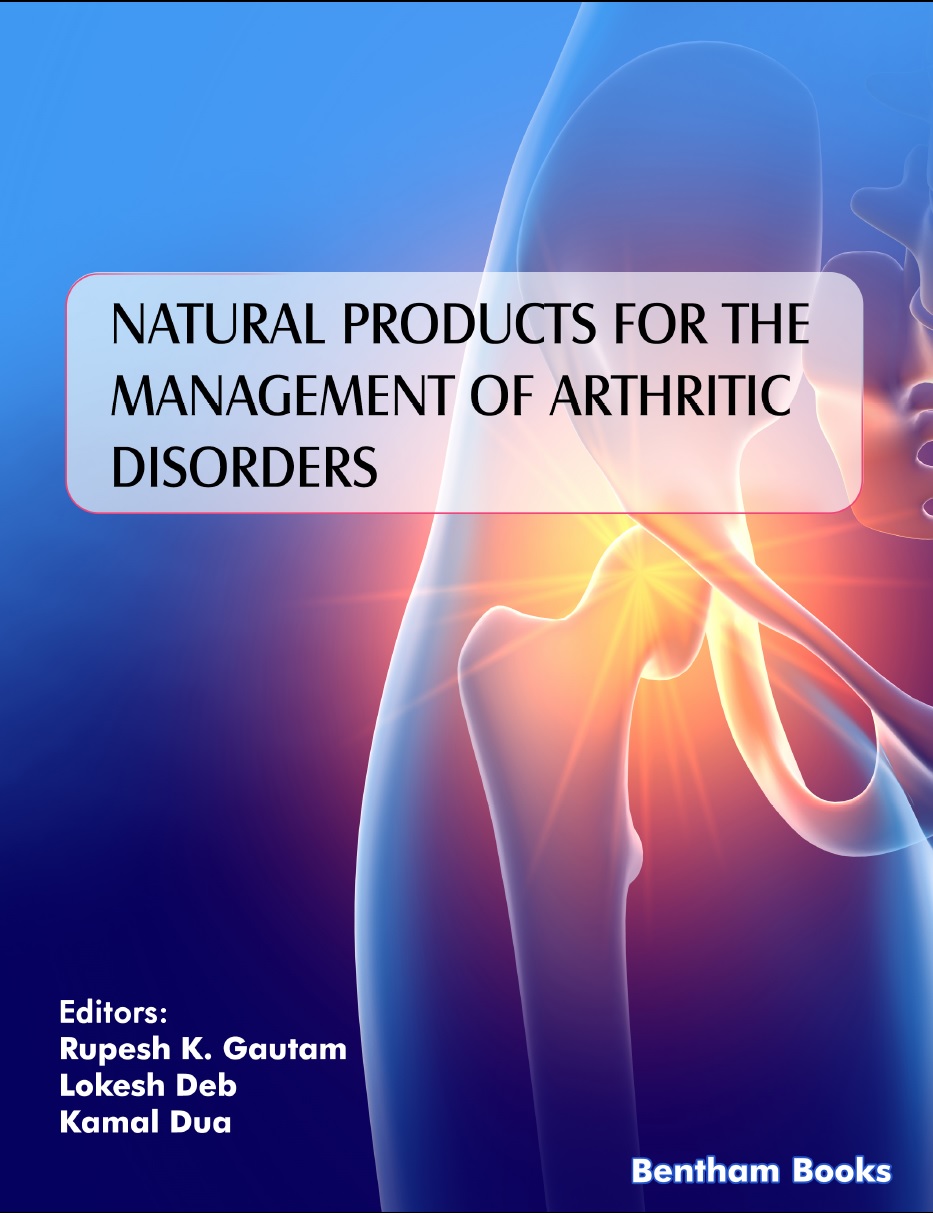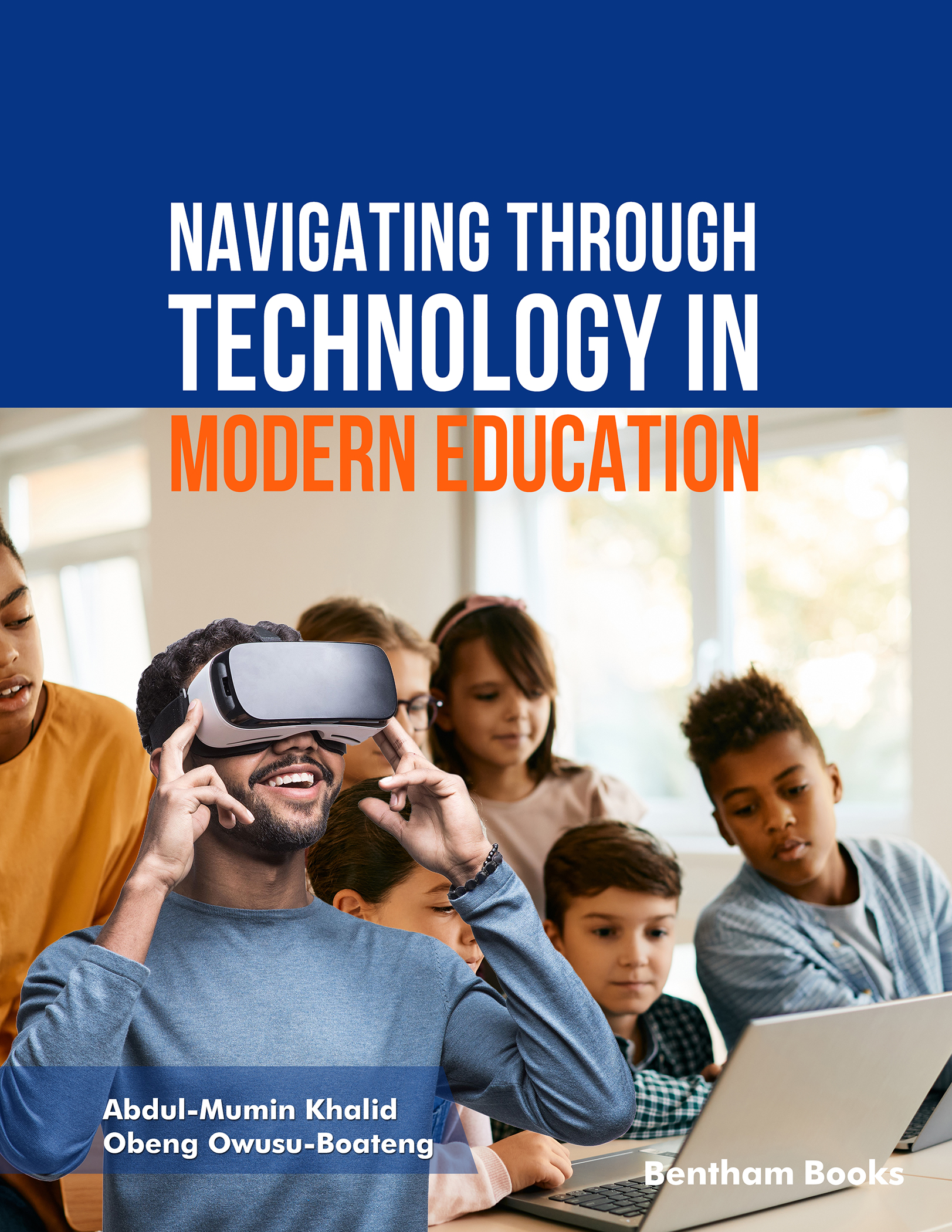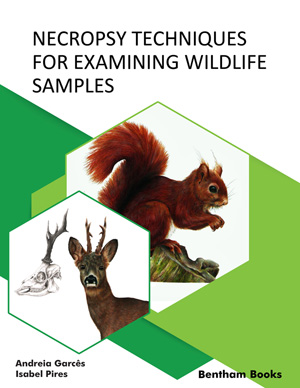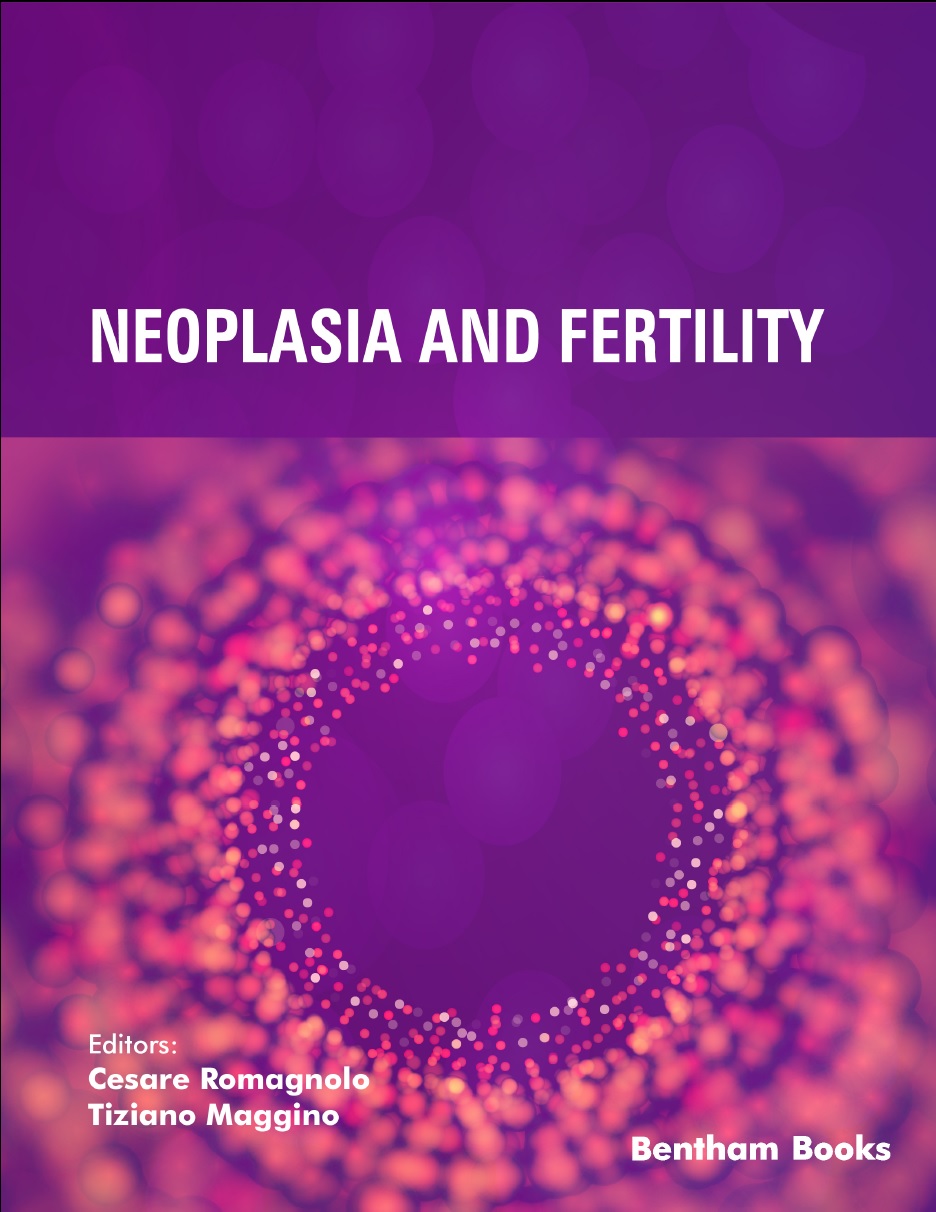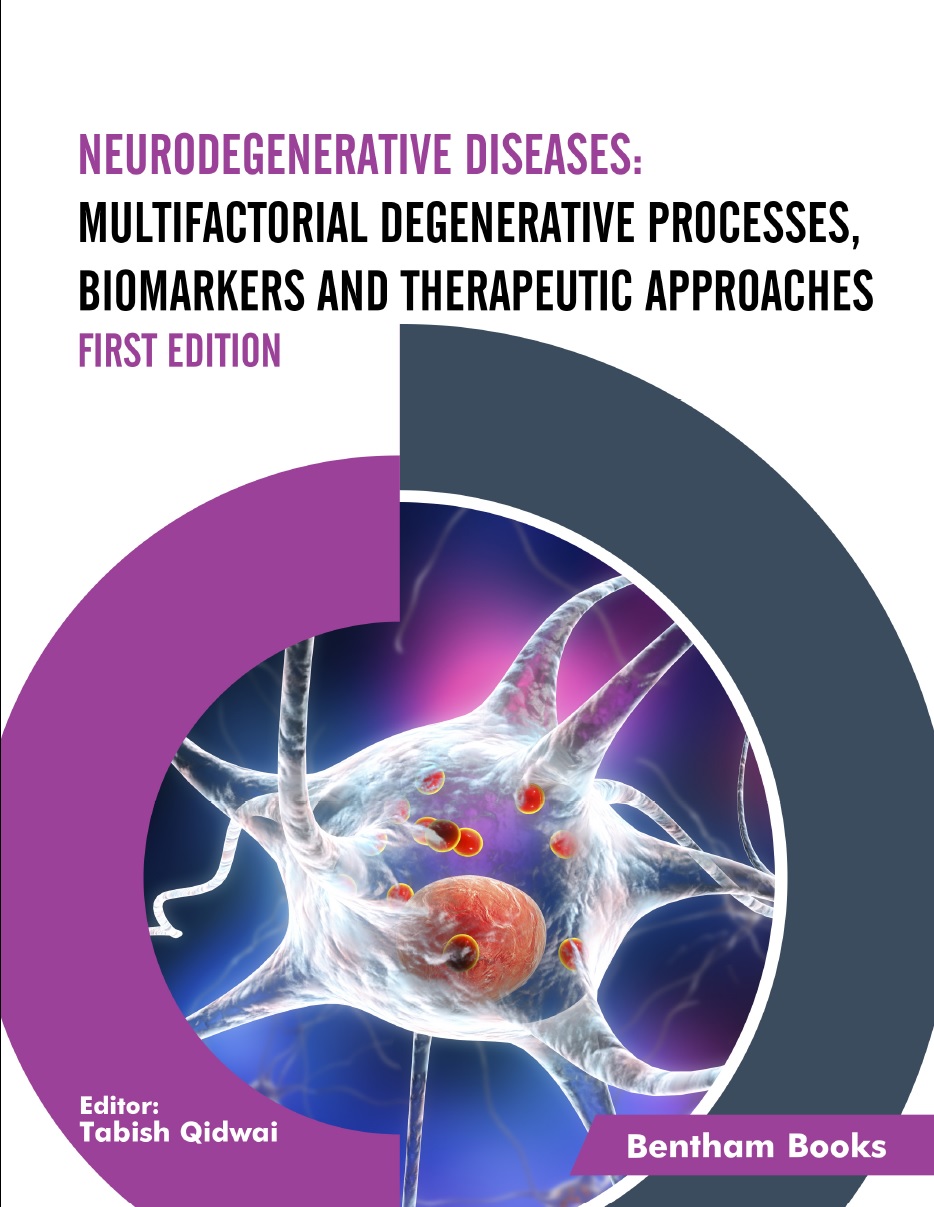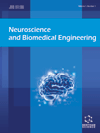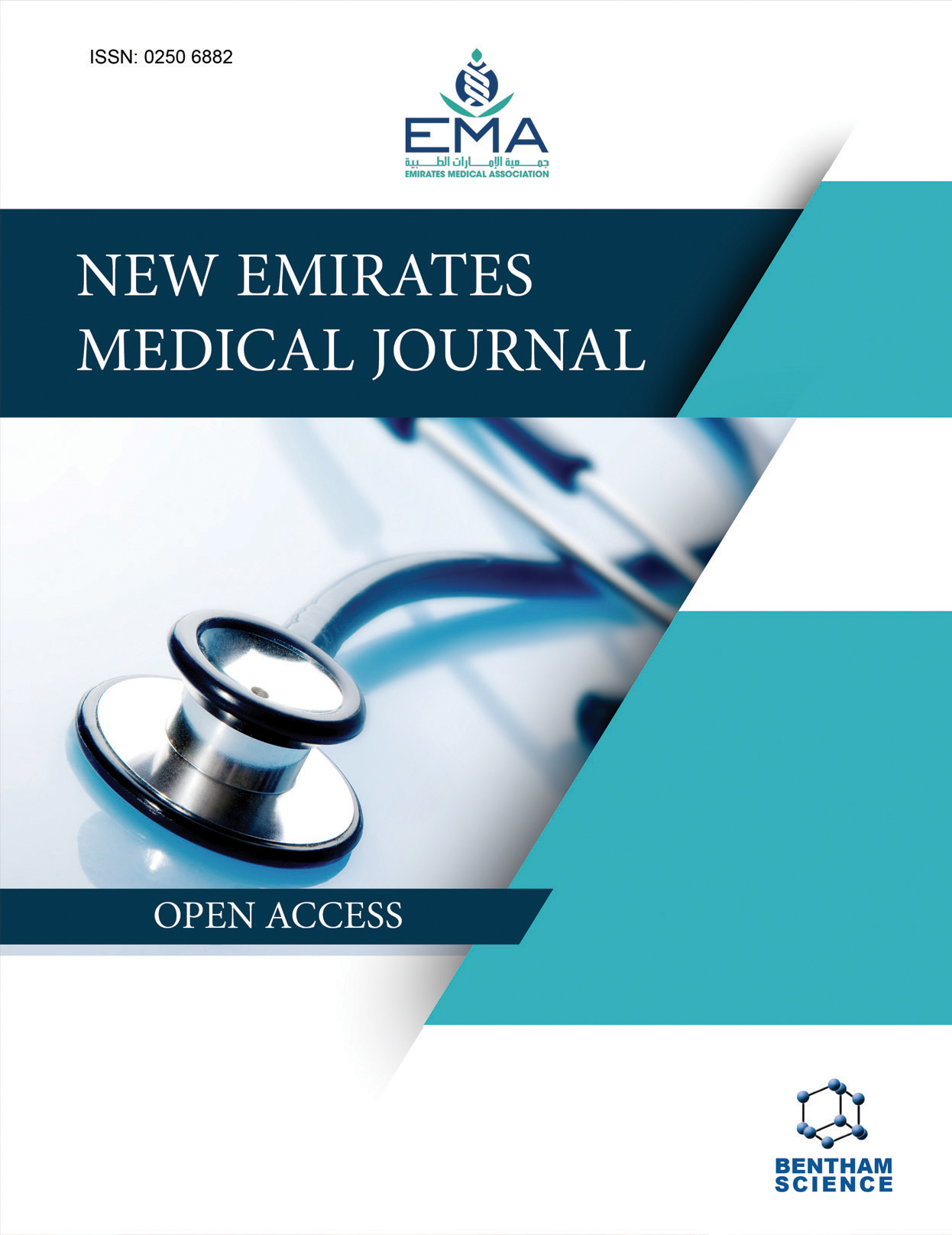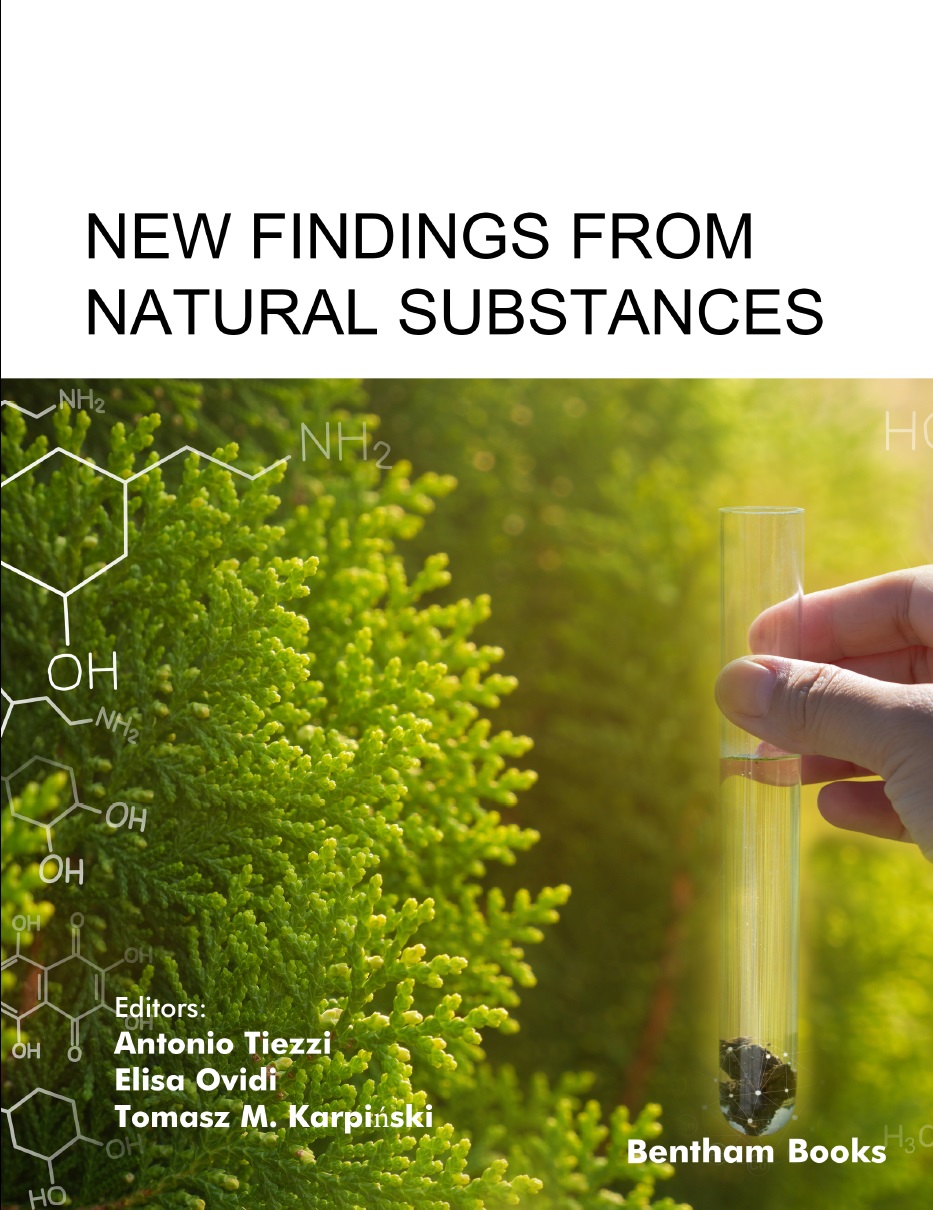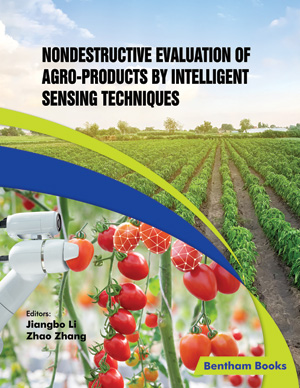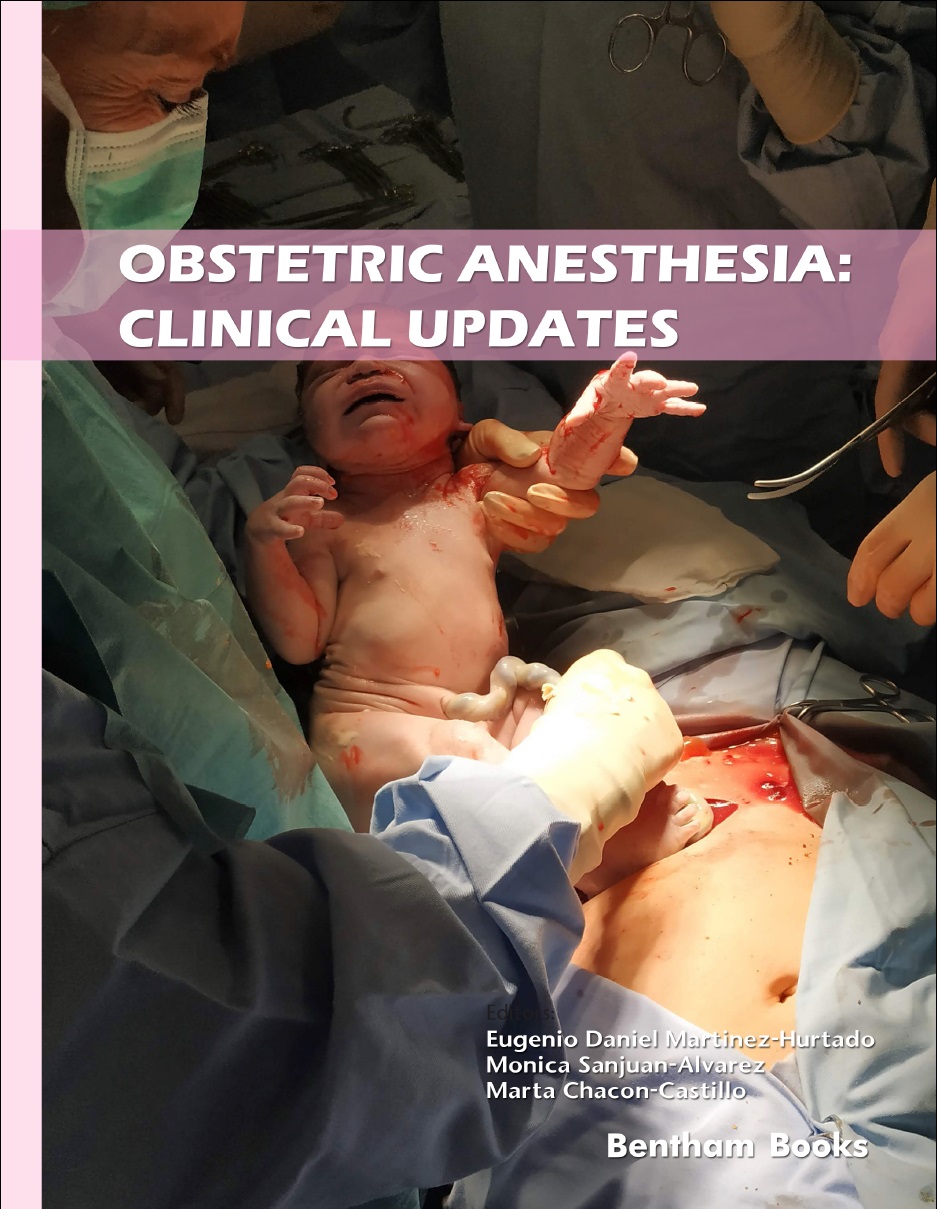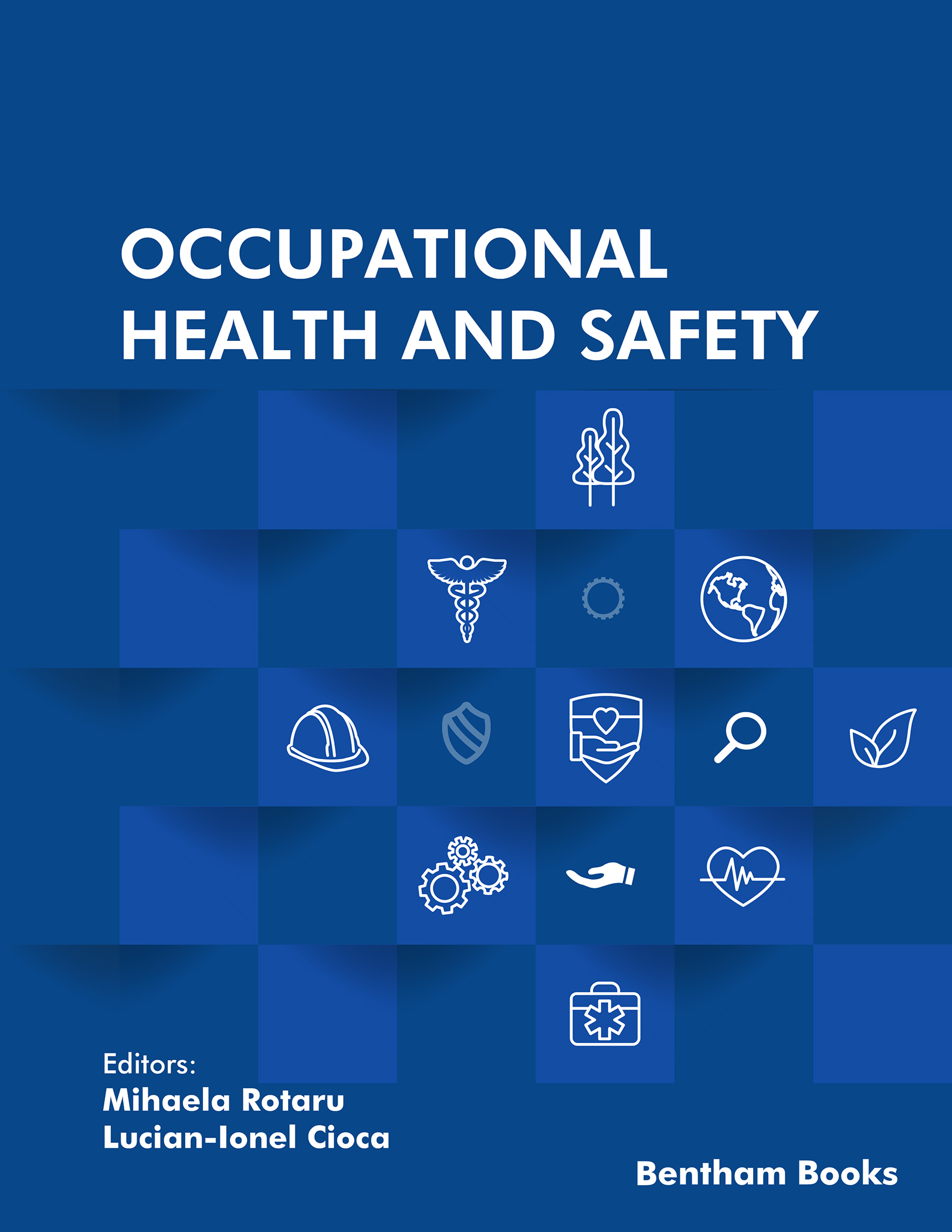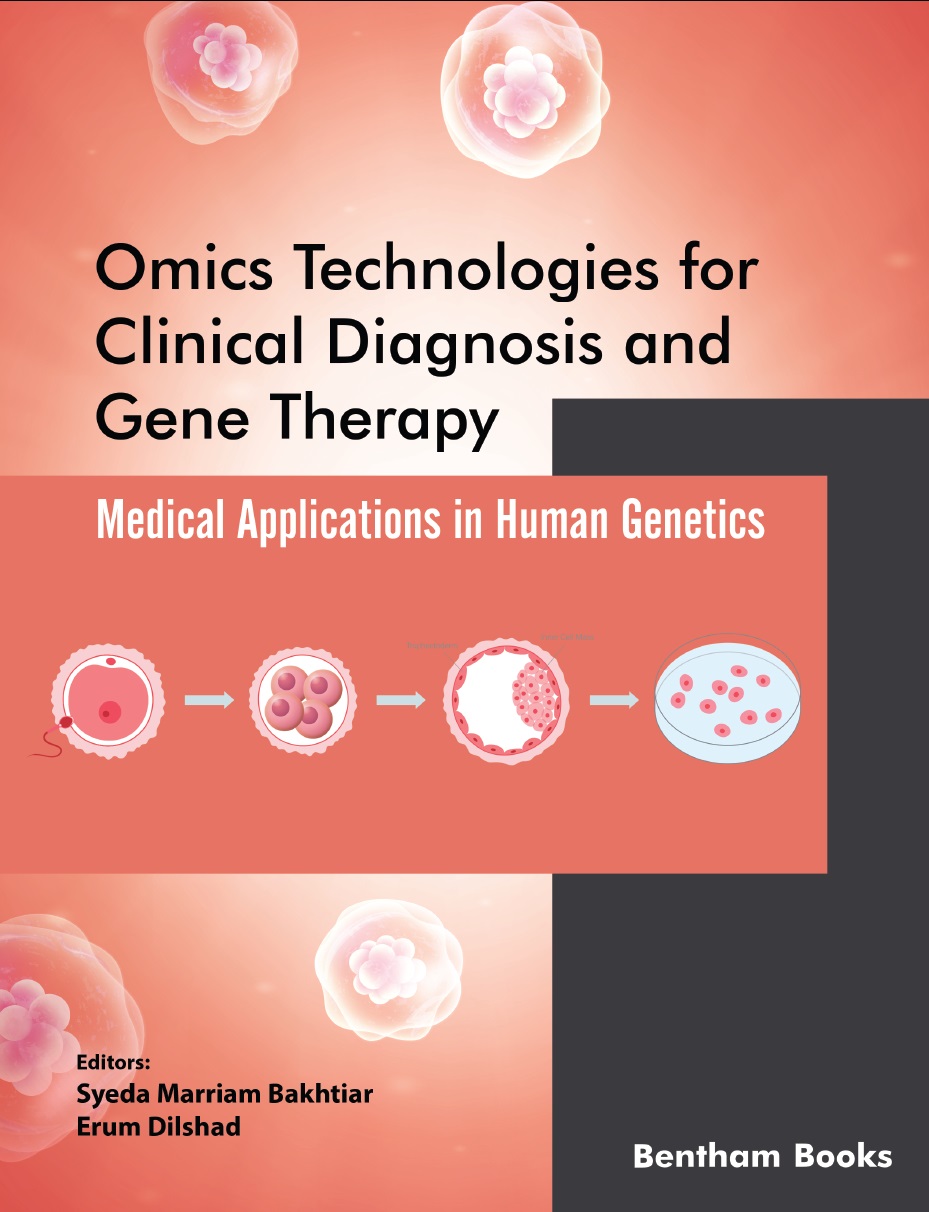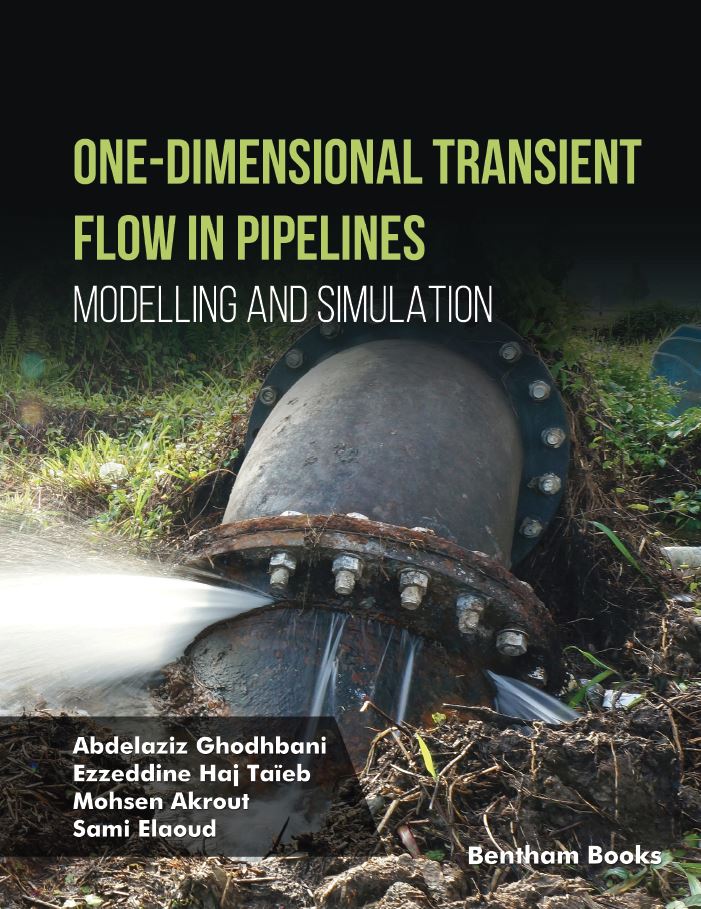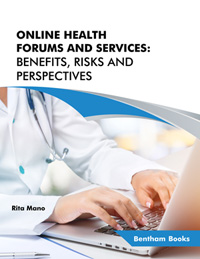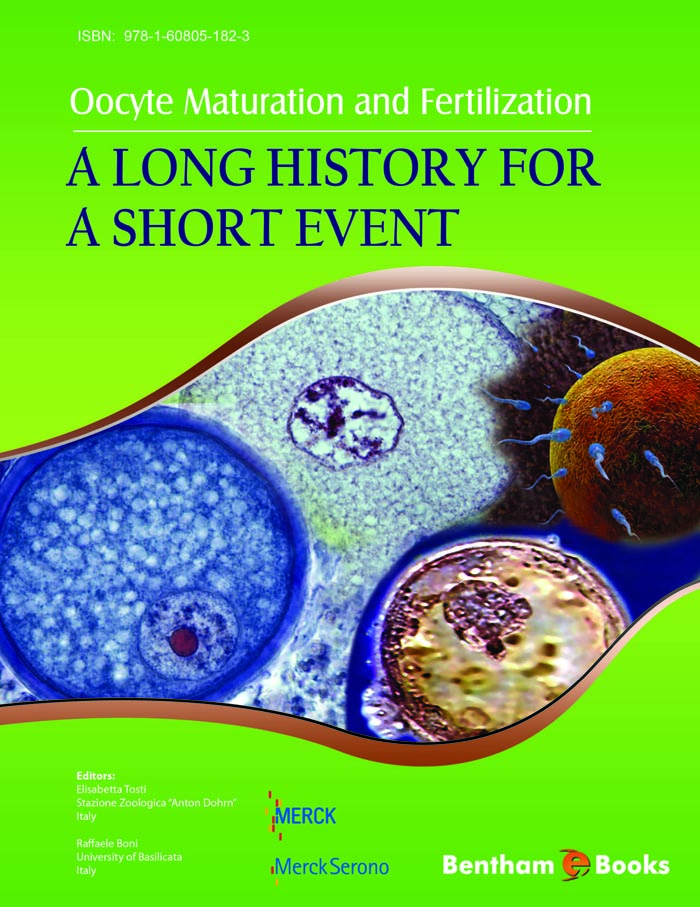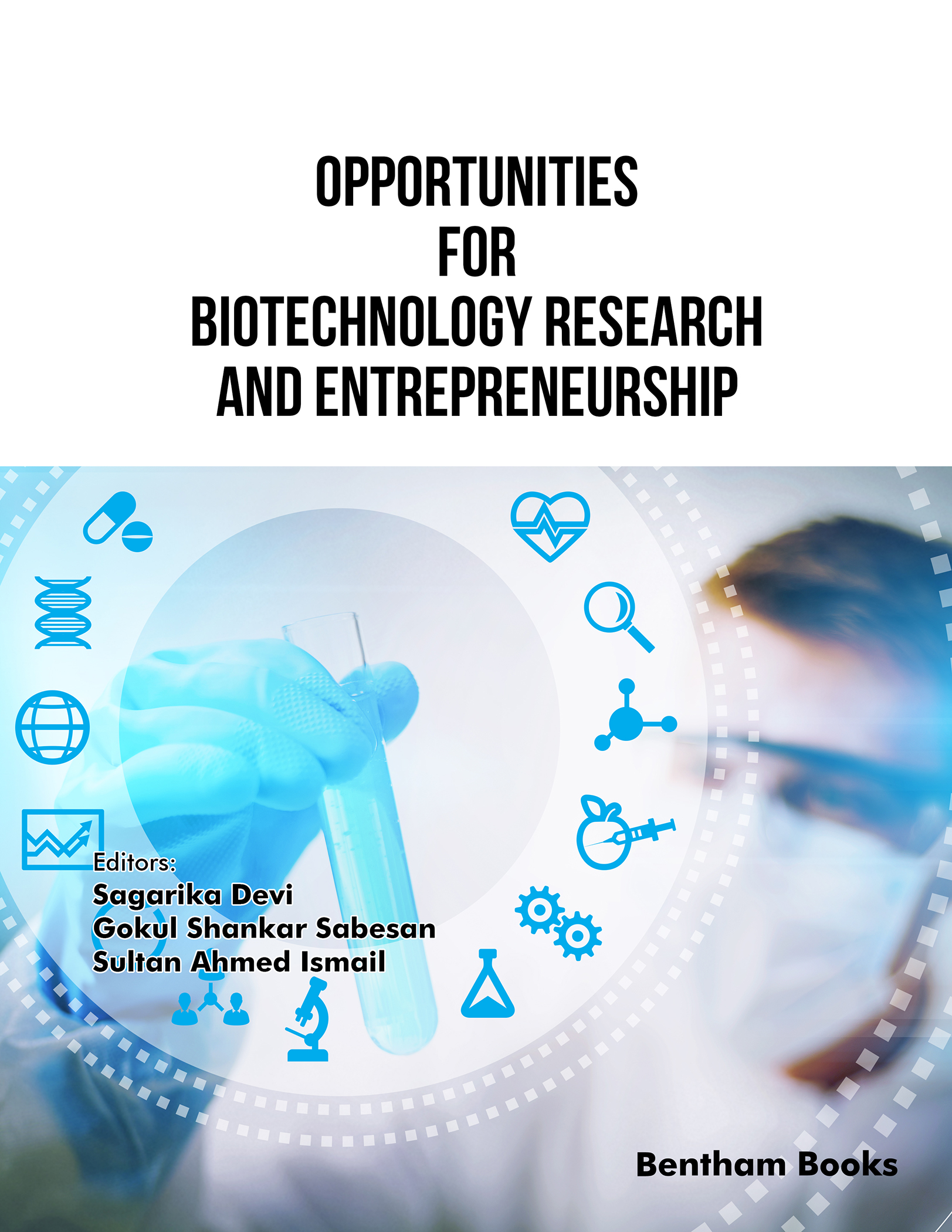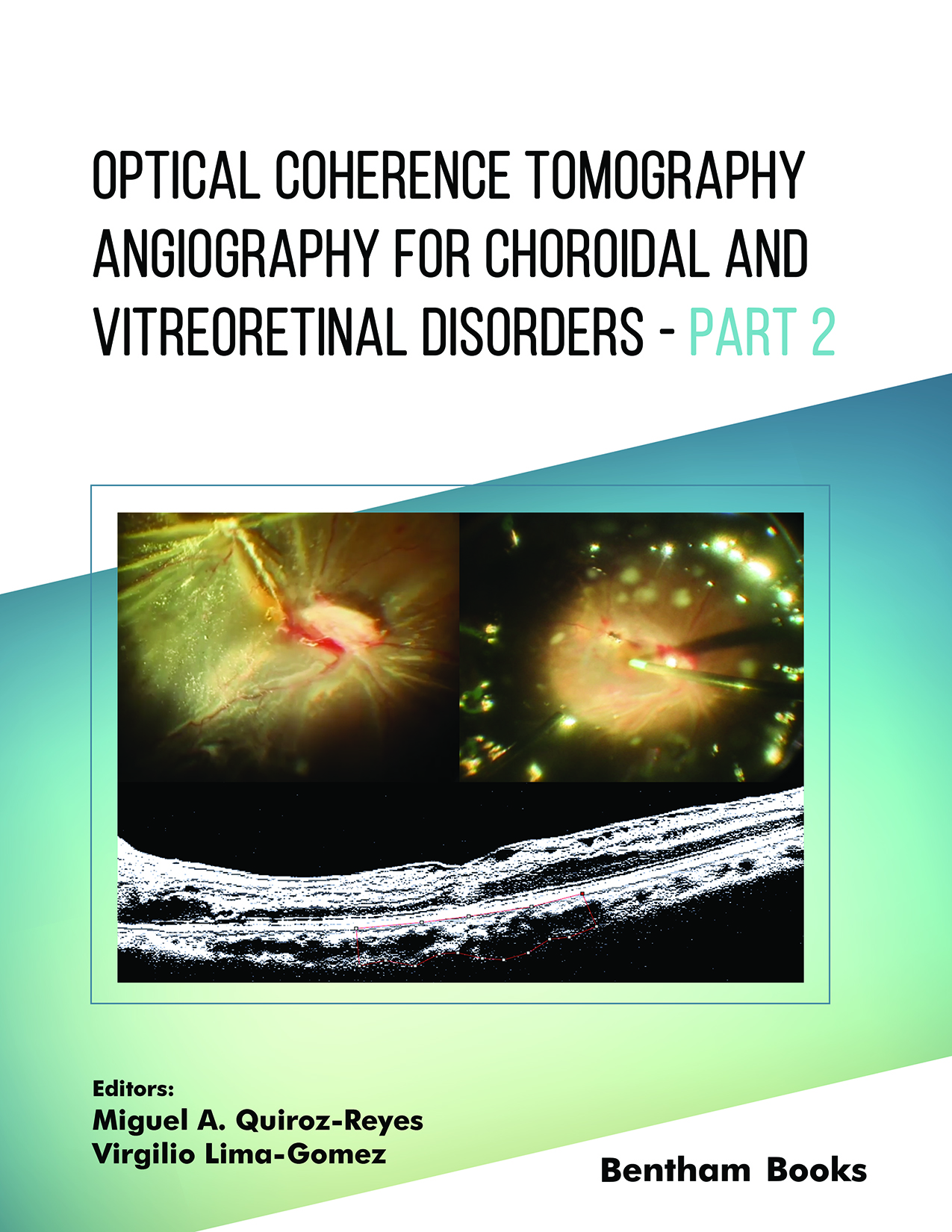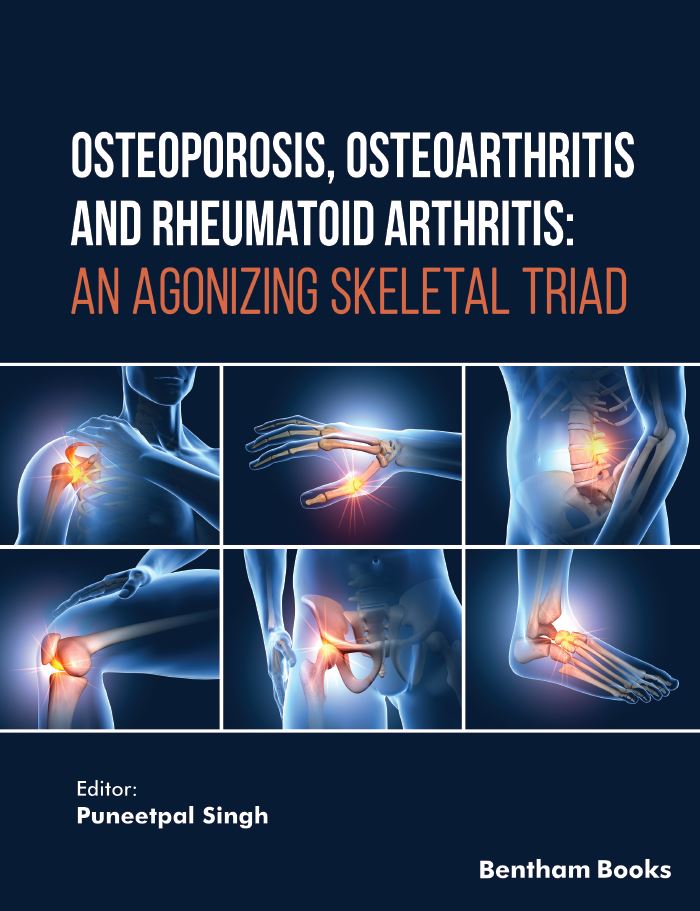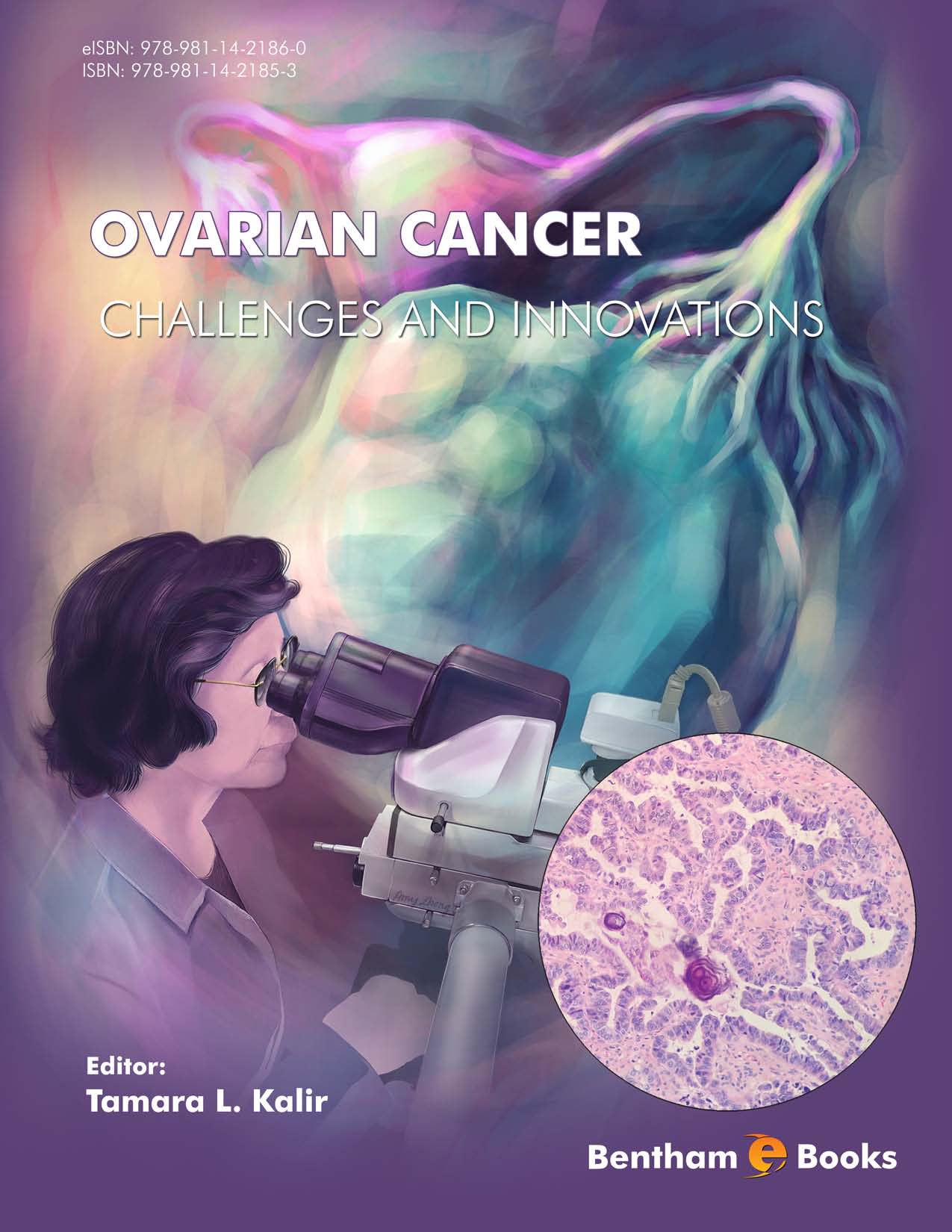- Home
- Publishers
- Bentham Science Publishers
Bentham Science Publishers
Bentham Science Publishers is a major publisher of more than 100 peer-reviewed science, technology and medical (STM) journals, along with a rapidly growing collection of eBooks. Since 1993, Bentham Science Publishers has been catering to the information needs of the pharmaceutical, engineering, biomedical and medical research community.551 - 600 of 812 results
-
-
Myconanotechnology: Green CheSouth American Faunamistry for Sustainable Development
Mycology: Current and Future Developments: Volume 3
More LessMyconanotechnology is the interface between mycology and nanotechnology. In other words, myconanotechnology represents the green synthesis of nanoparticles using fungi. The field is recently gaining attention due to the simple, resource efficient, and ecofriendly nature of fungal biotechnology. Therefore, Myconanotechnology is at the core of cost-effective and sustainable solutions for many industrial processes.
This volume provides readers at all academic levels with a broad background on some of the fastest developing areas in myconanotechnology. It is organised into two sections, A and B. Section A updates readers on several cutting-edge aspects of the synthesis and characterization of nanoparticles through the use of fungi. Section B describes applications of myconanotechnology including: the management of bacterial and fungal diseases, pest control, among other applications in medicine and agriculture. The breadth of topics covered in the contents make this volume an informative resource on the field. Contributions are written by experts in industrial biotechnology, and include extensive references to published studies.
This book is a timely reference for researchers, teachers and students, and all readers who are interested in new developments in industrial mycology and nanotechnology.
-
-
-
Nano Materials Induced Removal of Textile Dyes from Waste Water
More LessNanotechnology has progressed to the point where it can mimic natural systems such as porous membranes or the structure of leaves. Technological advances have resulted in a boom in the use of nanotechnology in different areas of engineering, including water purification systems. This book explores nanomaterials used for removing various textile dyes from water. It compiles 8 chapters that discuss the materials and nano systems used in these processes.
This reference is designed to provide answers to common questions for scholars, academicians and technologists about fundamentals of nanoscience and nanomaterial induced removal of textile dyes. College students (physics, chemistry and materials science, engineering) will be able to easily understand the subject matter.
Key Features:
- Covers the basics of nano systems, from synthesis to applications
- Explains the basics of nanomaterial behavior and characterization
- Describes the classifications of dyes - Explains the interactions nanomaterials with different dyes
- Explains the reaction mechanisms of photocatalysis and the kinetics behind adsorption
- two important methods for removing dyes from water
- Discusses nano systems that are useful for textile dye removal from water. 3 types of nano systems are included: carbon based, oxide based, polymer based or nitride based systems - Includes references for further reading
- Simple presentation for easy and quick understanding of the subject
-
-
-
Nanobiotechnology: Principles and Applications
More LessNanobiotechnology is the application of nanotechnology in biological fields. Nanobiotechnology is a multidisciplinary field that currently engages researchers in conventional as well as advanced avenues of engineering and natural sciences.The recent developments in nanobiotechnology have impacted various socio-economic sectors, including medical, agriculture, food, textile, and other industries. Although the integration of nanomaterials with biology has led to the development of diagnostic devices, contrast agents, analytical tools, therapy, and drug-delivery vehicles, bionanotechnology research is still in its infancy. The full potential of developments in this field have yet to be realized.
This book discusses various nano-engineered materials or nanocarriers that are used in different situations. It presents 8 chapters that cover the application of nanobiomaterials in environmental remediation, nanofertilisers, nanobiotics against antimicrobial resistance, nanobiosensors in pathogen detection, and nanotoxicity assessments. Each chapter is structured into easy-to-read sections that explain fundamental and applied concepts of nanobiomaterials. Readers will gain a current view of the biotechnological application of modern nanomaterials and nanoparticles. The book is intended to be a primer for students and researchers in agriculture, biotechnology, and biomedical engineering courses.
-
-
-
Nanocomposite Materials for Sensors
Current and Future Developments in Nanomaterials and Carbon Nanotubes: Volume 2
More LessThis reference reviews the reported literature on new approaches of nanocomposite material preparation and their applications in the development of physical, chemical, electrochemical, biological, fluorescence and colorimetric sensors. Sensor nanomaterials have been extensively used to amplify signals in the detection of a range of chemicals including toxic gases, biochemical nutrients, ions, explosives, pesticides and drugs to name a few. 14 chapter contributions highlight state-of-the-art sensors in recent years by outlining the synthesis, role and progress of nanocomposite materials in fabricating flexible and multifunctional sensing platforms in sensor technologies.
Chapters first introduce the reader to nanocomposite materials and their role in making a wide array of sensors including metal-organic, graphene-based and polymeric sensors. The chapters then progress into applications of sensors for the detection of chemicals such as blood glucose, heavy metal and other toxic ions, hydrazine, humidity and explosive. Each chapter explains the required materials for electrodes and material components for a specific sensor platform with additional information about sample collection, threshold values and perspectives where appropriate.
The book is intended as a compilation of knowledge for designing novel nanocomposite materials to be used as sensing platforms in sensor technologies. It serves as an informative resource for a broad range of readers including graduates and post-graduates, Ph. D. scholars, faculty members and professionals working in the area of material science, the healthcare industry, biological sciences, medical sciences, and environmental sciences.
-
-
-
Nanoelectronic Devices and Applications
More LessNanoelectronic Devices and Applications presents reviews on recent advances in nanoelectronic device design and new directions for their practical use. The volume includes 16 edited chapters that cover novel material systems, band engineering, modelling and simulations, fabrication and characterization techniques, and their emerging applications. The discussions presented in this book are based on current understandings on innovations and future trends, and references are provided for advanced scholars.
Chapter 1 presents an overview of recent innovations and future prospects in III-nitride semiconductor technologies for RF, power, digital and quantum applications. Chapter 2 reports new trends in GaN-based optical devices for sensing and micro-display applications. Chapter 3 shows current interests in nanophosphors and their utilizations in improving device performance of InGaN nanowire light-emitting diodes (LEDs). Recent studies on the effect of potential profile on the carrier transport in AlGaAs based double quantum well structures and their applications are presented in Chapter 4. The recent progress in high-electron-mobility transistors (HEMTs) is presented through Chapters 5, 6, and 7.
A comprehensive review on β-Ga2O3 emphasizing material properties, growth approaches, and its applications for next-generation high-power nanoelectronics; the effect of dielectric layers on the characteristics of AlN/β-Ga2O3 HEMTs are presented in Chapter 8 and 9 respectively. Chapters 10-14 summarize the recent studies in field-effect transistors (FETs) adopting different materials and structures. Chapter 15 presents current research in 2D Tungsten Diselenide (WSe2) with special focus on the material properties, device structures, applications, and challenges. Finally, Chapter 16 presents a systematic review of memristors, and memristive semiconductor devices.
The book is intended as a primary resource for elective subjects in advanced electronics and computer engineering courses at university level. Researchers and industry professionals will also learn about emerging trends and state-of-the-art research in nanoelectronics.
-
-
-
Nanoelectronics Devices: Design, Materials, and Applications - Part 2
More LessNanoelectronics Devices: Design, Materials, and Applications provides information about the progress of nanomaterial and nanoelectronic devices and their applications in diverse fields (including semiconductor electronics, biomedical engineering, energy production and agriculture). The book is divided into two parts. The editors have included a blend of basic and advanced information with references to current research. The book is intended as an update for researchers and industry professionals in the field of electronics and nanotechnology. It can also serve as a reference book for students taking advanced courses in electronics and technology. The editors have included MCQs for evaluating the readers’ understanding of the topics covered in the book. Topics Covered in Part 2 include applications of nanoelectronics for different devices and materials. - Photonic crystal waveguide geometry - 8kW to 80kW power grids with simple energy storage systems - Two-dimensional material and based heterojunctions like MoS2 /graphene, MoS2 /CNT, and MoS2 /WS2, - 5G communication material - Wearable devices like electronic skin, intelligent wound bandages, tattoo-based electrochemical sensors - PEDOT: PSS-based EEG - New materials for medicine
-
-
-
Nanomaterials and Their Interactive Behavior with Biomolecules, Cells and Tissues
More LessNanoscience is a multidisciplinary area of science which enables researchers to create tools that help in understanding the mechanisms related to the interactions between nanomaterials and biomolecules (nanotechnology). Nanomaterials represent nanotechnology products. These products have an enormous impact on technical industries and the quality of human life. Nanomaterials directly or indirectly have to interact with biosystems. It is, therefore, essential to understand the beneficial and harmful interactions of nanomaterials with and within a biosystem, especially with reference to humans.
This book provides primary and advanced information concerning the interactions between nanomaterials and the components of a typical biosystem to readers. Chapters in the book cover, in a topic-based approach, the many facets of nanomolecular interactions with biological molecules and systems that influence their behavior, bioavailability and biocompatibility (including nucleic acids, cell membranes, tissues, enzymes and antibodies). A note on the applications of nanomaterials is also presented in the conclusion of the book to illustrate the usefulness of this class of materials.
The contents of the book will benefit students, researchers, and technicians involved in the fields of biological sciences, such as cell biology, medicine, molecular biology, food technology, cosmetology, pharmacology, biotechnology, and environmental sciences. The book also provides information for the material science personnel, enabling them to understand the basics of target-oriented nanomaterials design for specific objectives.
-
-
-
Nanomaterials: An Approach Towards Environmental Remediation
More LessThis book explains various methods needed to overcome the challenges faced during environmental remediation with a focus on nanotechnology. The book comprises ten edited chapters that aim to inform and educate readers about recent technologies that are beneficial for pollution control.
Starting with an introduction to environmental remediation, the book covers innovative nanomaterials including spinel nanoferrites, carbonaceous quantum dots, carbon nanotubes and nanobioadsorbents. In addition to highlighting the environmental benefits of these materials, the book includes chapters on the potential of nanotechnology for harnessing the environment to generate energy through nanogenerators and piezoelectric energy harvesting devices.
Key features of the book include notes on fundamental issues and challenges regarding environmental remediation, easy to read content with pictorial illustrations and scholarly references for each chapter. The book is an informative resource for students and academicians in science, technology and environmental science discipline.
-
-
-
Nanoparticles and Nanocarriers Based Pharmaceutical Preparations
More LessNanomedicine is a rapidly expanding field because of its benefits over conventional drug delivery technology, as it offers site-specific and target-oriented delivery of therapeutic agents. Nanoparticles and Nanocarriers Based Pharmaceutical Preparation presents a structured summary of recent advances and discoveries in nanomedicine and nanocarrier-based drug delivery. The book covers several key topics in a very simple and easy to understand language. Readers will be familiarized with many types of nanocarriers that have been developed over the past decade, the pharmaceutical formulations composed of organic and inorganic materials as well as their clinical benefits. Chapters are written with the help of authoritative sources of knowledge with the goal of building a foundational understanding of novel drug delivery systems. Since the subject matter is interdisciplinary, it will be of interest to students, teachers and researchers in a broad range of fields, including pharmaceutical sciences, nanotechnology, biomedical engineering and material sciences.
-
-
-
Nanopharmacology and Nanotoxicology: Clinical Implications and Methods
More LessThis book explains key concepts and applications of nanotechnology in clinical medicine and pharmacology. The chapters have been contributed by experts and provide a broad perspective about the current and future developments in pharmacology, toxicology, cell biology, and materials science. The book is divided into 2 main sections. The first section concerns nanobiotechnology for human health including gastrointestinal disease, kidney diseases, pulmonary disorders, reproductive system, COVID-19, and cancer. The second section is devoted to toxicological aspects of nanomaterials which involve toxicological assessments of nanotherapeutics and potential solutions for nanotoxicology. Key Features - Emphasizes the high degree of interdisciplinary research in pharmacology, toxicology and nanoscience - Summarizes the results of theoretical, methodological, and practical studies in different medical subspecialties - includes special topics such as novel nanotoxicology assessment methods and nano vaccines - Includes references for further reading
-
-
-
Nanoscience & Nanotechnology-Asia
More LessNanoscience & Nanotechnology-Asia publishes expert reviews/ mini reviews, original research articles, letters and guest edited issues on all the most recent advances in nanoscience and nanotechnology with an emphasis on research in Asia and Japan. All aspects of the field are represented including chemistry, physics, materials science, biology and engineering mainly covering the following; synthesis, characterization, assembly, theory, and simulation of nanostructures (nanomaterials and assemblies, nanodevices, nano-bubbles, nano-droplets, nanofluidics, and self-assembled structures), nanofabrication, nanobiotechnology, nanomedicine and methods and tools for nanoscience and nanotechnology.
The Journal offers thorough and authoritative reviews, perspectives on cutting-edge research and discussions of topics that provide distinctive views about the future of nanoscience and nanotechnology.
-
-
-
Nanotechnology Driven Herbal Medicine for Burns: From Concept to Application
More LessBurns can cause life-threatening injury and the lengthy hospitalization and rehabilitations required in burn therapy lead to higher healthcare costs. The risk of infection has also been one of the important concerns of burn wound management. The purpose of the burn wound care management is speedy wound healing and epithelization to limit the infection. The topical application of therapeutic agents is quintessential for the longevity of patients having significant burns.
In recent times, research on herbal medicine for burn wound management has been vastly increased because of their safer toxicological profiles in contrast to synthetic medicines. Despite the promising therapeutic potential of herbal medicines in this area, herbal medications have some limitations which include low pharmacological activity, solubility and stability. Nanotechnology-based smart drug delivery approaches which involve the use of small molecules as nanocarriers, however, can help to overcome these biopharmaceutical challenges.
This book provides an overview of plant-mediated metallic nanoparticulate systems and nanophytomedicine based therapeutic treatment modalities for burn wound lesions. Nine chapters deliver updated information about nanomedicines for burn wound therapy. Contributions are written by experts in nanomedicine and phytomedicine and collectively cover the pathophysiology of wound lesions, current and future outlook of nanomedicine based treatments for burn wound lesions, the role of biocompatible nanomaterials in burn wound management, plant-mediated synthesis of metal nanoparticles for treating burn wound sepsis, phytomedicine based nanoformulations and the phyto-informatics models involved in the wound healing process which are used to select appropriate nanotherapeutic agents.
This reference serves as an accessible source of information on the topic of nanomedicine for burn treatments for all healthcare professionals (medical doctors, nurses, students trainees) and researchers in allied fields (pharmacology, phytomedicine) who are interested in this area of medicine.
-
-
-
Nanotechnology in Drug Discovery
More LessThis book provides a compressive overview of nanotechnology in modern drug discovery for students and researchers. The book starts with the fundamentals of nanotechnology followed by nanomaterials in pharmaceutical drug design, drug delivery applications, regulatory aspects, formulation and nanoparticle biotransformation. It provides a step by step guide through the drug development process while conveying information about the benefits of nanomaterials for therapy. The book concludes with perspective on the future of nanotechnology-based drug discovery, summarizing current knowledge on nanotherapeutics and translational medicine.
Key Features
- Explains the fundamentals of nanotechnology in drug discovery
- Includes up-to-date information on modern nanopharmaceutical manufacturing, nanomaterials, and nanoparticle-based drug therapy
- Practice questions for learners and a list of references for advanced readers for each chapter
-
-
-
Nanotechnology: A Quick Guide to Materials and Technologies
More LessNanotechnology: A Quick Guide to Materials and Technologies invites readers to explore the cutting-edge world of nanotechnology, offering a comprehensive yet accessible introduction to this rapidly evolving field. The content provides a foundation for understanding the field and details the properties of significant nanomaterials. Readers will also gain insights into innovative processes while receiving a balanced perspective on the social and regulatory aspects of nanotechnology.
Key Features:
Foundational Knowledge: Begins with an overview of nanotechnology, its history, and its key concepts,
Diverse Nanomaterials: Explores various types of nanomaterials, including nanoparticles, nanowires, and carbon-based materials like graphene, detailing their properties and potential applications.
Advanced Applications: Explores the real-world uses of nanotechnology across multiple sectors, such as medicine, electronics, energy, and environmental science, demonstrating its transformative impact.
Fabrication and Characterization: Covers techniques for creating and analyzing nanomaterials, offering insights into the processes that drive innovation in the field.
Ethical and Societal Considerations: Discusses the broader implications of nanotechnology, including ethical, societal, and regulatory aspects
Ideal for students, educators, researchers, and industry professionals, this guide serves as an informative resource for anyone looking to deepen their understanding of nanotechnology.
-
-
-
Nanotherapeutic Strategies and New Pharmaceuticals (Part 1)
More LessAdvances in technology have enabled medicinal chemists to discover and formulate several highly specific, biocompatible, and non-toxic therapeutic agents for clinical applications. Nanotechnology has achieved significant progress in the last few decades and is crucial in every field of science and technology. Nanotechnology-based pharmaceuticals offer multifaceted and alternative methodologies in comparison to the limitations of many conventional clinical therapies. Expertise in designing and developing nanoformulations has helped in targeted drug delivery. Recently, the use of innovative therapeutic agents, particularly in nanomedicine, has accounted for a significant portion of the global pharmaceutical market and is predicted to continue to grow rapidly in the near future.
Nanotherapeutic Strategies and New Pharmaceuticals is an accessible multi-part reference which informs the reader about several new techniques based on nanotechnology. The chapters explain relevant topics in detail. The book is designed to encourage and help undergraduate, graduate and post-graduate students in the field of nanotherapeutics, pharmaceuticals and bio-organic chemistry through the use of didactic language and simple illustrations.
Part 1 of this book set explains general advances in nanomedicine, followed by chapters covering the role of nanotherapeutics in hematology and cancer treatment, as well as specific types of nanomaterials based on different components (such as boron, graphene, silver and other metals). The book also features a chapter that summarizes the processes for designing nanoparticles tailored for specific targets. The book serves as a textbook for students in pharmacology and medical biochemistry, as well as a quick reference for researchers on bio-organic chemistry, as well as general readers interested in nanomedicine.
-
-
-
Nanotherapeutic Strategies and New Pharmaceuticals Part II
More LessAdvances in technology have enabled medicinal chemists to discover and formulate several highly specific, biocompatible, and non-toxic therapeutic agents for clinical applications. Nanotechnology has achieved significant progress in the last few decades and is crucial in every field of science and technology. Nanotechnology-based pharmaceuticals offer multifaceted and alternative methodologies in comparison to the limitations of many conventional clinical therapies. Expertise in designing and developing nanoformulations has helped in targeted drug delivery. Recently, the use of innovative therapeutic agents, particularly in nanomedicine, has accounted for a significant portion of the global pharmaceutical market and is predicted to continue to grow rapidly in the near future. Nanotherapeutic Strategies and New Pharmaceuticals is an accessible multi-part reference which informs the reader about several new techniques based on nanotechnology. The chapters explain relevant topics in detail. The book is designed to encourage and help undergraduate, graduate and post-graduate students in the field of nanotherapeutics, pharmaceuticals and bio-organic chemistry through the use of didactic language and simple illustrations. Part 2 of this book covers the potential of nanotherapeutics and natural therapies for treating neurological diseases, targeting ion channels, signal transduction therapy, gene therapy of single gene mutation diseases and for nanoformulations for special purposes such as wound healing and stimuli-responsive drug delivery. The book also features a chapter that summarizes the types of nanoparticles tailored for specific molecular targets that mediate different diseases. The book set serves as a textbook for students in pharmacology and medical biochemistry, as well as a quick reference for researchers on bio-organic chemistry, as well as general readers interested in nanomedicine.
-
-
-
Nanotherapeutics for the Treatment of Hepatocellular Carcinoma
More LessHepatocellular carcinoma (HCC) is a leading cause of death globally. Conventional chemotherapeutic agents are unable to penetrate cancerous hepatocytes completely and are toxic to non cancerous cells and tissues. This toxicity significantly compromises the therapeutic outcome of conventional chemotherapeutic agents which is also reflected in the high mortality of the disease. Nanotherapeutics have shed new light onto HCC treatment by enabling site-specific in vivo delivery of chemotherapeutics specifically to neoplastic hepatocytes without affecting normal hepatocytes. Thus, nanotherapeutics have shown considerable potential and there is tremendous impetus for rapid translation from the pre-clinical to the clinical domain to significantly prolong the survival in HCC.
In Nanotherapeutics for the Treatment of Hepatocellular Carcinoma, authoritative experts of the field have explored the important aspects of nanotherapeutics against HCC. The book exhaustively, vividly and explicitly describes the molecular pathogenesis, diagnostic aspects and nanotherapy of HCC, while also highlighting the challenges of conventional therapy and the benefits of nanotherapeutics. Chapters of the book also cover recent investigations of nanotherapeutics against HCC, types of nanomedicines, recent patents, commercially available nanotherapeutics and a future perspective to give a comprehensive review of the topic to readers. In addition to these defining features, the book provides several references for further reading. The book is an ideal resource on HCC nanotherapeutics for medical and pharmacology postgraduate students, faculties, researchers, and biomedical scientists working on HCC and nanotherapy.
-
-
-
Natural Conservative Dentistry: An Alternative Approach to Solve Restorative Problems
More LessIn nature lies the solution to restore teeth with minimal damage. In this groundbreaking book, the management of dental challenges is presented from a new perspective. Natural Conservative Dentistry: An Alternative Approach to Solve Restorative Problems provides evidence-based solutions to dental challenges to researchers, practitioners and dental service providers. The main attribute of all these solutions is that they are all derived from natural ingredients. Natural ingredients are an effective alternative for dental care and management in contrast to synthetic products that have multiple side effects.
This book fills a knowledge gap on alternative and sustainable solutions derived from nature to respond effectively to dental challenges encountered in dental treatment for the conservation of the tooth. It is a compilation of the work of expert dentists that has been carried out in clinics for the management of dental problems.
Key Features
- Provides an insightful look at the prevention of dental diseases through evidence-based interventions using natural products in 9 referenced chapters
- Contains valuable contributions in restorative dentistry, such as caries prevention, enamel and dentin remineralization, dentin biomodification, dentin desensitization, vital pulp therapy, antioxidants, and tooth bleaching
- Provides an update on the current status of different ingredients used in oral health care products developed for commercial markets
- Includes notes on pathophysiology and diagnosis on specific conditions and sources of natural ingredients
The book is a valuable reference for trainees and professionals who want to enhance their restorative dentistry practice in the clinic.
-
-
-
Natural Feed Additives Used in the Poultry Industry
More LessNatural Feed Additives Used in the Poultry Industry addresses recent information on the use of different natural feed additives in poultry nutrition. Chapters in the book focus on the growth, production, reproduction and health of poultry.
Key Features:
- 15 chapters contributed by more than 30 experts and scientists involved in animal and poultry nutrition, physiology, toxicology, pharmacology, and pathology
- Chapters highlight the significance of a variety of herbal plant extracts and derivatives, cold pressed and essential oils, fruits by-products, immunomodulators, organic acids, probiotics, nanoparticles and their role in poultry industry instead of the growth promoter antibiotics.
- Provides details about the use of antibiotic as growth promoters in poultry and the development of bacterial resistance.
- Provides a holistic approach on how natural feed additives can provide an efficient solution to animal health,
- Covers the main categories of poultry, including broiler chickens, laying hens, quails, geese, ducks, and turkey.
- References in each chapter for further reading
This handbook represents an up-to-date review of the existing knowledge on natural feed additives, both in vitro and in vivo and the basis for future research. The text is useful to students of poultry sciences, nutritionists, scientists, veterinarians, pharmacologists, poultry breeders, and animal husbandry extension workers.
-
-
-
Natural Immunomodulators: Promising Therapy for Disease Management
More LessNatural Immunomodulators: Promising Therapy for Disease Management discusses the use of natural immunomodulators as a promising therapy for managing various diseases. The book begins with an introduction to the immune system and the ways in which it can be modulated. This is followed by a discussion on the various diseases and disorders associated with the immune system, including autoimmune disorders, allergies, and immune deficiency conditions. The natural sources of immunomodulators, including plants, herbs, and other natural substances is also explained along with the importance of standardizing natural immunomodulator drugs, including the methods used to ensure their quality and consistency. The book also delves into the chemistry and analytical techniques used to study immunomodulators, clinical and pre-clinical bioassays. The next couple of chapters focus on the use of natural immunomodulators in cancer, the therapy of cancer and infectious diseases. Drug delivery and the strategy and regulatory perspective for natural immunomodulators. The final 2 chapters round up the contents with information about synthetic immunomodulators and the future perspective for the use of immunomodulators in disease management. Natural Immunomodulators: Promising Therapy for Disease Management is a comprehensive guide to the use of natural immunomodulators as a therapy for various diseases, and is a valuable resource for professionals and students interested in this topic. The book is aimed at health care professionals such as medical doctors, nurses, pharmacists, and life science and nutritionist professionals, as well as students.
-
-
-
Natural Medicine
New Avenues in Drug Discovery and Bioactive Natural Products
More LessNew Avenues in Drug Discovery and Bioactive Natural Products is the second volume of the Natural Medicine book series. It is devoted to current research in drug discovery from natural sources. The volume features 13 chapters that cover modern analytical and scientific approaches. The book starts with chapters on advanced analytical and research techniques, such as genomic mining, quality control of herbal drugs, DNA fingerprinting, high-throughput screening, molecular docking and extraction techniques. The contributors provide a summary of challenges for researchers and commercial applications where possible. The book also features chapters dedicated to specific medicinal agents that target a disease (glycosides, SARS-CoV2 spike protein inhibitors, and andrographolides. The collection of important research topics in natural product chemistry aims to help the scholars and researchers in the scientific community that are involved in the extraction and development of new medicines.
-
-
-
Natural Products Journal, The
More LessThe Natural Products Journal a peer-reviewed journal, aims to publish all the latest and outstanding developments in natural products.
The Natural Products Journal publishes original research articles, full-length/mini-reviews, letters, and guest-edited issues on all aspects of research and development in the field, including isolation, purification, structure elucidation, synthesis, and bioactivity of chemical compounds found in nature. Articles related to recent developments in medicinally important natural products, particularly concerning the structure-activity studies regarding certain diseases, such as inflammation, cancer, tropical diseases, diabetes, cardiovascular diseases, etc., are also covered in this journal.
-
-
-
Natural Products for Skin Diseases: A Treasure Trove for Dermatologic Therapy
More LessNatural Products for Skin Diseases: A Treasure Trove for Dermatologic Therapy is an enlightening journey through the realm of natural remedies for various skin diseases. The editors have compiled information on effective and holistic treatment approaches that can be applied in clinical settings. This book brings diverse range of topics, including skin protection against harmful radiation, natural remedies for burns and wounds, management of skin pigmentation issues, and herbal treatments for scabies. It also explores the potential of natural cosmetics and their future applications, along with the use of natural products and nanoparticles in skin delivery. All chapters are contributed by experts in dermatology and herbal medicine, and are supplemented with scientific references for advanced readers. The book primarily serves as a textbook for students in medicine and dermatologists in training. It also serves as a valuable guide for dermatologists, researchers, and healthcare professionals, revealing the treasure trove of benefits that natural products offer for treating skin diseases.
-
-
-
Natural Products for Treatment of Skin and Soft Tissue Disorders
More LessNatural Products for Treatment of Skin and Soft Tissue Disorders presents a simple and straightforward exploration of the role medicinal plants play in treating a diverse range of skin-related disorders. With contributions from researchers worldwide, this book delves into the pathology of skin conditions such as eczema, superficial mycoses, acne, vitiligo, and skin ulcers, providing effective treatment protocols using natural remedies. It also addresses prevalent disorders like atopic dermatitis and skin infections in developing countries. Finally, the book sheds light on the rising concern of skin cancer and potential natural therapeutic approaches. Readers will be equipped with the knowledge to harness the power of natural medicines in their dermatology practice.
This comprehensive resource serves as a handbook for medical residents, students and dermatologists, offering invaluable insights into the potential of medicinal plants for the treatment of skin and soft tissue disorders.
-
-
-
Natural Products for the Management of Arthritic Disorders
Frontiers in Arthritis: Volume 5
More LessRheumatoid arthritis (RA) is the most common inflammatory complication and affects approximately 1 % of the global population. It affects three times more women than men. RA is an autoimmune disorder elicited by exposure of genetic factors from the host to unknown antigens causing arthritogenic complaints. It also includes the activation of lymphocytes as well as CD4+ helper T cells along with the local release of chronic inflammatory mediators and cytokines like tumor necrosis factor (TNF-α) and various cytokines like interleukins (IL) that enormously affect the joints. The available allopathic therapies for RA are not a cure for the complications, and antibody therapy and surgical procedures are expensive.
However, in the present era, researchers and healthcare professionals have moved toward natural medicines obtained from plants and other natural sources. Research-based on developments in phytomedicine has progressed steadily. Evidence has been collected to show the massive therapeutic potential of medicinal plants used in various traditional systems against many pathological complications. Researchers have focused on the therapeutic potential of natural products used for treatment and counteracting various disorders along with their complications having negligible adverse effects.
Natural Products for the Management of Arthritic Disorders compiles current knowledge about the bioactive compounds and herbal formulations useful in the treatment of rheumatoid arthritis. 11 chapters explain the role of natural products in the management of rheumatoid arthritis. Topics have been contributed by experts in medicinal chemistry and rheumatology.
The book first introduces the reader to rheumatoid arthritis before delving into conventional and alternative therapies for the disease. The editors have also included special topics such as the biomarkers for RA, cytokines and anti-inflammatory mediators, and preclinical and clinical studies. The range of topics should provide a comprehensive overview of natural remedies for arthritis and the role of natural products in anti-arthritic drug development.
The information will be useful for many readers including medical and pharmacology students, multidisciplinary research scholars, scientists, pharma/herbal/food industrialists, and policy makers.
-
-
-
Navigating through Technology in Modern Education
More LessNavigating through Technology in Modern Education explores the transformative impact of digital innovation in education. From introducing digital transformation to discussing the benefits and challenges, this book covers crucial topics like e-learning, artificial intelligence, big data, and the Internet of Things in education. With insights into factors for adopting technology and tailored learning experiences, this book equips readers with the knowledge to navigate the evolving landscape of modern education. Whether you're a seasoned educator or a newcomer, this book offers valuable insights into leveraging technology for enhanced learning experiences.
-
-
-
Necropsy Techniques for Examining Wildlife Samples
More LessIn this handbook, the authors provide a practical, easily accessible guide of necropsy techniques for examining wildlife. Chapters introduce the reader to the value of necropsy in studying wildlife in general, sample collection methods, cadaveric phenomena and necropsy techniques for a variety of organisms ranging from invertebrates to mammals. The book addresses some of the peculiar characteristics of veterinary autopsy specific to different types of specimens. The goal of this book is to equip the reader with the information necessary to conduct a forensic examination in order to reach a conclusive diagnosis of an animals death, while also understanding it in an ecological context.
Necropsy Techniques for Examining Wildlife Samples is intended as an essential handbook for students and professionals of biology, zoology and veterinary medicine as well as professionals, who work in natural parks, wildlife rehabilitation centers and biological or zoological parks as conservationists, researchers or animal handlers.
-
-
-
Neoplasia and Fertility
More LessResearch on young individuals and childbearing adults being treated for neoplasia has revealed a rising number of requests for treatments aimed to maintain the possibility to conceive. To answer such requests, it is important for medical professionals to consider the necessity to cure the woman, to preserve her fertility, to give information both on the effect of neoplasia and treatments on pregnancy. Patients have to be informed on the possible treatment alternatives that are less aggressive towards the reproductive function, but at the same time, give desirable results in terms of survival.
Neoplasia and Fertility describes the state-of-the-art on fertility preservation in women affected by neoplasia. The 11 book chapters inform the reader with the goal of equipping them with the required information needed to present the condition and to discuss the possibility of conceiving, and how to manage patients after oncologic treatments at different stages of pregnancy.
Key Features
- Informs the reader about the relationship between gynecological cancer and fertility in women through 11 chapters
- Describes a broad range of cancers and relevant treatment options for maintaining fertility
- Explains the role of a 'Fertility Sparing Team' in clinics
- Familiarizes the reader with the ethics behind oncology treatments with reference to female fertility
- Describes fertility issues related to hereditary cancers in women
- Includes references for further reading
The book serves as an informative reference on the subject to medical doctors in the gynecology, obstetrics and midwife specialties, and nurses training the gynecological oncology. It will also be of interest to healthcare administrators involved in fertility and oncology clinics, as well as general practitioners in family medicine.
-
-
-
Neurodegenerative Diseases: Multifactorial Degenerative Processes, Biomarkers and Therapeutic Approaches
More LessThis reference is the definitive guide to common neurodegenerative diseases that affect humans. The book covers mechanisms of some of the most well-known neurodegenerative diseases, their biomarkers, neuropharmacology, and emerging treatment strategies.
The book introduces the subject of neurodegeneration by outlining the biochemistry, pathophysiology and multifactorial neurological mechanisms (the role of genetics, environmental factors and mitochondrial damage, for example). Next, it explains some of the most studied diseases, namely, Parkinson's Disease, Alzheimer's Disease, Huntington's Disease, and Multiple Sclerosis. Subsequent chapters delve into current knowledge about diagnostic and immunological biomarkers, followed by a summary of novel therapeutic strategies.
Special attention has been given to the role of medicinal plants in attempting to treat neurodegenerative diseases, as well as the public health burden posed by these conditions.
Key Features - give readers an overview of multifactorial disease mechanisms in neurodegeneration
- covers some major neurodegenerative diseases in detail
- covers diagnostic and immunological biomarkers
- explores current therapeutic strategies and drug targets in common neurodegenerative diseases
- offers a simple presentation with references for advanced readers
The book is a suitable reference for all readers, including students, research scholars, and physicians who are interested in the mechanisms and treatment of neurodegenerative diseases.
-
-
-
Neuroscience and Biomedical Engineering (Discontinued)
More LessNBE is the official journal of the Institute of Complex Medical Engineering (ICME). The journal promotes the best interdisciplinary research in neuroscience and biomedical engineering. NBE welcomes contributions in any domain of neural and biomedical engineering ranging in content from practical/clinical applications through experimental science, technological developments to quantitative and/or statistical methodology discussions. NBE publishes the following article types: original articles, research reviews, and book reviews.
The goal of this journal is to establish a new forum for this interdisciplinary field so neuroscientists and biomedical engineers can publish their research works in one periodical. NBE is devoted to bridge the gap between Neuroscience and Biomedical Engineering , and to foster the mutual understanding in both fields.
Typical topics include, but certainly are not limited, to the following:
Neural Technology and Neural Rehabilitation
Neurology and Signal Processing
Biomedical Informatics
Biomechanics and Neural Control
Theoretical and Computational Neuroscience
Imaging NeuroscienceKey Features:
- Original research papers and special issues for topics
- Basic neurosciences, and biomedical engineering technologies
- Existing and potential clinical applications
- Periodic ‘Review Papers’ from world-recognized experts
- International scope
- No page charges
- Rapid publication times
- Free color in electronic version
-
-
-
New Age Cyber Threat Mitigation for Cloud Computing Networks
More LessIncreasingly global and online social interactions and financial transactions involve digital data, computing devices and the internet. With cloud computing, remote computing, enterprise mobility and e-commerce on the rise, network security has become a priority. Selecting an appropriate algorithm and policy is a challenge for computer security engineers, as new technologies provide malicious users with opportunities to intrude into computer networks.
New Age Cyber Threat Mitigation for Cloud Computing Networks provides cloud and network engineers answers to cybersecurity challenges. It highlights new options, methodologies and feasible solutions that can be implemented in cloud architecture and IT Infrastructure, thereby securing end users. Chapters cover many topics related to cyber threats in the modern era.
These topics include:
Ransomware and DDoS attacks
Security algorithms
Design and implementation solutions for resilient and fault-tolerant cloud and network services
Security policy
End user data security The book is an essential resource for anyone involved in cloud computing and network security, including learners, professionals and enthusiasts.
-
-
-
New Emirates Medical Journal
More LessNew Emirates Medical Journal (NEMJ) formerly known as Emirates Medical Journal (EMJ) is an official journal of the Emirates Medical Association (EMA), UAE, is an Open Access online journal. The NEMJ publishes original research, clinical reports, case studies, short research communications, reviews, book reviews, correspondence, and editorials. An exclusive platform “Student Forum” for aspiring medical students and post-graduate students is provided to encourage student submissions in all the medical specialties including pre-clinical, para-clinical, and clinical subjects, medical education, clinical management and various aspects of medicine and public health.
Each peer-reviewed article that is published in the New Emirates Medical Journal is universally and freely accessible via the Internet in an easily readable and printable PDF format.
-
-
-
New Findings from Natural Substances
More LessNew Findings from Natural Substances present the state-of-the-art and future prospects for the application of biomolecules in the pharmaceutical, agricultural, food and industrial sectors. The book presents eight reviews contributed by more than twenty experts on interesting natural substances, and plant sources, that serve as sources of natural remedies for a variety of ailments. The reviews in the book cover the use of herbs like Heliotropium and Astragalus. Additional health benefits of extracts from essential oils, Caenorhabditis elegans, and olive oil, as well as the medicinal use of rosmarinic acid and hydrolates. The contributions highlight a range of pharmacological agents from natural sources that have anti-cancer, anti-inflammatory, cardioprotective and neuroprotective effects. The contents are presented in a simple and organized style. The book will broaden the knowledge about biological products for a variety of readers & generalists, students and researchers, alike.
-
-
-
New Worlds: Colonizing Planets, Moons and Beyond
More LessTerraforming is the process of modifying a planet, moon, or other body to a more habitable atmosphere, temperature, or ecology. The idea of terraforming or colonizing other planets has recently become a topic of intense scientific interest and public debate. Geoengineering and terraforming, at their core, have the same goal: to enhance or revive the ability of a specific environment to support human life, society, and industry. New Worlds: Colonizing Planets, Moons and Beyond examines extra-terrestrial colonization plans with a critical eye. The ten chapters of the book provide a detailed review of the demographic and economic reasons behind this space imperative, technical and ecological solutions to improve the settlement of our own planet, enhancements of our current space industry. The book also covers interesting topics such as the terraformation of Mars, the moon, and other planets like Venus, colonizing the outer solar system (and beyond), and the ethical considerations in favor of space expansion. This simple, yet informative treatise is an essential read for anyone interested in the subject of space colonization
-
-
-
Nondestructive Evaluation of Agro-products by Intelligent Sensing Techniques
More LessWith rapid progress being made in both theory and practical applications, Artificial Intelligence (AI) is transforming every aspect of life and leading the world towards a sustainable future. AI technology is fundamentally and radically affecting agriculture with a move towards smart systems. The outcome of this transition is improved efficiency, reduced environmental pollution, and enhanced productivity of crops.
Nondestructive Evaluation of Agro-products by Intelligent Sensing Techniques is a reference which provides readers timely updates in the progress of intelligent sensing techniques used for nondestructive evaluation of agro-products. Chapters, each contributed by experts in food safety and technology, describe existing and innovative techniques that could be or have been applied to agro-products quality and safety evaluation, processing, harvest, traceability, and so on. The book includes 11 individual chapters, with each chapter focusing on a specific aspect of intelligent sensing techniques applied in agriculture. Specifically, the first chapter introduces the reader to representative techniques and methods for nondestructive evaluation. Subsequent chapters present detailed information about the processing and quality evaluation of agro-products (e.g., fruits, and vegetables), food grading, food tracing, and the use of robots for harvesting specialty crops.
Key Features:
- 11 chapters, contributed by experts that cover basic and applied research in agriculture
- introduces readers to nondestructive evaluation techniques
- covers food quality evaluation processes
- covers food grading and traceability systems
- covers frontier topics that represent future trends (robots and UAVs used in agriculture)
- familiarizes the readers with several intelligent sensing technologies used in the agricultural sector (including machine vision, near-infrared spectroscopy, hyperspectral/multispectral imaging, bio-sensing, multi-technology fusion detection)
- provides bibliographic references for further reading
- gives applied examples on both common and specialty crops
This reference is intended as a source of updated information for consultants, students and academicians involved in agriculture, crops science and food biotechnology. Professionals involved in food safety and security planning and policymaking will also benefit from the information presented by the authors.
-
-
-
Numerical Machine Learning
More LessNumerical Machine Learning is a simple textbook on machine learning that bridges the gap between mathematics theory and practice. The book uses numerical examples with small datasets and simple Python codes to provide a complete walkthrough of the underlying mathematical steps of seven commonly used machine learning algorithms and techniques, including linear regression, regularization, logistic regression, decision trees, gradient boosting, Support Vector Machine, and K-means Clustering.
Through a step-by-step exploration of concrete numerical examples, the students (primarily undergraduate and graduate students studying machine learning) can develop a well-rounded understanding of these algorithms, gain an in-depth knowledge of how the mathematics relates to the implementation and performance of the algorithms, and be better equipped to apply them to practical problems.
Key features
- Provides a concise introduction to numerical concepts in machine learning in simple terms
- Explains the 7 basic mathematical techniques used in machine learning problems, with over 60 illustrations and tables
- Focuses on numerical examples while using small datasets for easy learning
- Includes simple Python codes
- Includes bibliographic references for advanced reading The text is essential for college and university-level students who are required to understand the fundamentals of machine learning in their courses.
-
-
-
Nutritional Biochemistry: From the Classroom to the Research Bench
More LessNutritional Biochemistry: From the Classroom to the Research Bench aims to provide students and readers with a detailed, simplified, and comprehensive account of the relationship between nutrition and metabolism.
A key feature of this textbook is a comparative approach on the subject of nutritional biochemistry which helps to explain the differences in metabolism, nutrient requirement, and sometimes in the molecular pathways between mammalian and non-mammalian species.
Chapters give an overview of the need of food and water (chapter 1), before describing the cell and organ system components (chapter 2). The textbook then focuses on the regulation of food intake from the factors influencing appetite to the central and peripheral underlying mechanisms (chapters 3-5).
Water intake and regulation in the body are covered (chapter 6), along with key topics of protein, carbohydrate, and lipid metabolism (chapters 7, 8, and 9), including their digestion, absorption, transport, utilization, synthesis, degradation, and molecular regulation. A brief summary concludes the book (Chapter 10).
This book serves as a textbook for students and faculty in beginner courses in biochemistry and nutrition and is designed to give learners a comprehensive understanding of the topic to help them when considering a career in research.
-
-
-
Objective Pharmaceutics: A Comprehensive Compilation of Questions and Answers for Pharmaceutics Exam Prep
More LessUnlock success in pharmaceutical exams with Objective Pharmaceutics: A Comprehensive Compilation of Questions and Answers for Pharmaceutics Exam Prep. This guide is meticulously crafted to tackle the challenges of pharmaceutics exams through a diverse range of questions. It covers multiple choice questions, concise one-liners, and true/false statements, mirroring the formats commonly found in drug inspector, pharmacist, GPAT, nursing exams, and more.
Key Features:
Exam-Ready Questions: Prepare for a variety of medical exams with more than 2000 carefully curated questions.
Diverse Testing Formats: Master multiple choice, one-liner, and true/false questions for a well-rounded exam readiness.
Broad Assessment: Tailored for drug inspectors, pharmacists, GPAT aspirants, and other medical professionals.
Build Thinking Capabilities: Progress from simple to challenging questions, enhancing critical thinking skills.
This thorough guide empowers you to learn the key topics in pharmaceutics and navigate the most challenging questions in your exam prep journey.
-
-
-
Obstetric Anesthesia: Clinical Updates
Recent Advances in Anesthesiology: Volume 4
More LessIn recent years, we have witnessed significant advances in obstetric anesthesia, providing greater safety for the mother and the fetus, as well as an improvement in pain management procedures during labor.
This volume presents updates in obstetrics and gynecology that are reflective of the changes in the demographics and associated clinical presentations of gynecological pathologies. It compiles state of the art information on the subject in 20 chapters contributed by more than 50 experts in obstetric anesthesia. The main objective of this volume is to inform and update readers about the different aspects essential to the practice of anesthesia and analgesia during pregnancy, labor, cesarean section and puerperium. The contents also include information about the management of pregnant women with different pathologies and high-risk pregnancies.
The authors believe that it is essential for all anesthesiologists to be aware of the latest advances and well-contrasted scientific evidence that will allow them to carry out their usual clinical activity.
The volume approaches the subject in a clear and didactic way for the benefit of all professionals involved in this field, including anesthesiologists, gynecologists, obstetricians, surgeons, clinicians and allied healthcare service providers.
-
-
-
Occupational Health and Safety
More LessThis comprehensive handbook delves into the essence of Occupational Health and Safety (OHS), exploring the dynamic interplay between regulations, practical methodologies, and the broader impact of OHS on organizations. The goal of the book is to help readers understand OHS practices in the workplace and how to implement a plan.
Chapter 1 establishes the conceptual framework of OHS and provides a foundational understanding of the subject. Moving forward, Chapters 2 and 3 dive into the international and national legal requirements, giving a comparative overview of OHS legislation in the EU and specific regulations in Romania, Italy, and Spain.
Chapter 4 introduces readers to risk assessment tools and the OHS management process, while Chapter 5 emphasizes the importance of performance monitoring and measuring.
Chapter 6 presents a step-by-step risk assessment methodology.
Finally, Chapter 7 explores the significant impact of OHS on overall company performance, integrating ergonomics and organizational resilience.
Key Features:
Combines theoretical insights with practical applications for academics and OHS professionals.
Offers an up-to-date analysis of OHS regulations, with a focus on EU guidelines and specific regulations for Romania, Italy, and Spain.
Provides knowledge on risk assessment tools and performance monitoring methods for effective safety measures.
Highlights the essential relationship between OHS and company performance with real-world examples and a systems approach.
The book is ideal for a wide range of readers, including OHS trainees, professional safety managers, policymakers, researchers and students studying OHS practices, safety regulations and its organizational impact.
-
-
-
Omics Technologies for Clinical Diagnosis and Gene Therapy: Medical Applications in Human Genetics
More LessGenetic disorders have been the focus of scientists for a long time. The emergence of next-generation sequencing techniques has ushered a new era in genetics and several developments have occurred in human genetics. The scientific perspective has also been widened with omics technologies that allow researchers to analyze genetic sequences and their expression products. An integrated approach is being used not only for diagnosis but also for disease management and therapeutic purposes.
This book highlights emerging areas of omics technology and its application in the diagnosis and management of human genetic disorders. The book covers three areas of research and implementation:
- Diagnosis (covering conventional strategies to next-generation platforms). This section focuses on the role of in silico analysis, databases and multi-omics of single-cell which will help in designing better management strategies.
- Disease Management and therapeutic interventions. This section starts with genetic counselling and progresses to more specific techniques such as pharmacogenomics and personalized medicine, gene editing techniques and their applications in gene therapies and regenerative medicine.
- Case studies. This section discusses the applications and success of all the above-mentioned strategies on selected human disorders.
This book serves as a handy reference for students and academics studying advanced omics techniques in biochemistry and molecular genetics as part of courses in life sciences, pharmacology and medicine.
-
-
-
On Generalized Growth rates of Integer Translated Entire and Meromorphic Functions
More LessThe theory of entire and meromorphic functions is a very important area of complex analysis. This monograph aims to expand the discussion about some growth properties of integer translated composite entire and meromorphic functions on the basis of their (p,q,t)L -order and (p,q,t)L -type.
This book presents six chapters. Chapter 1 introduces the reader to the preliminary definitions and notations. Chapter 2 and Chapter 3 discuss some results related to (p; q; t) L-th order and (p; q; t)L-th lower order of composite entire and meromorphic functions on the basis of their integer translation. Chapter 4 establishes some relations of integer translated composite entire and meromorphic functions based on their (p; q; t) L-th type and (p; q; t) L-th weak type. Chapter 5 deals with some results about (p; q; t) L-th order and (p; q; t) L-th type of composite entire and meromorphic functions on the basis of their integer translation. Chapter 6 focuses on some results about (p; q; t) L-th order and (p; q; t) L-th type of composite entire and meromorphic functions on the basis of their integer translation.
This monograph will be very helpful for postgraduates, researchers, and faculty members interested in value distribution theorems in complex mathematical analysis.
-
-
-
One-Dimensional Transient Flow in Pipelines Modelling and Simulation
More LessThis book presents numerical computational fluid dynamics (CFD) solutions for studying the effect of fluid-structure interaction (FSI) on evaluation of pressure waves in pipelines with cavitation. The authors develop a uniform one-dimensional model using coupled models. These models consider unsteady friction (UF), Poisson coupling, axial vibration (junction coupling), gas release and viscoelasticity. The authors consider two cases: elastic pipelines and viscoelastic (VE) pipelines.
The book starts with a detailed literature review on the relevant methods for calculating transient fluid flow, followed by chapters that explain the mathematical development for calculations and the numerical steps for water hammer and transient cavitation. The concluding chapters present the results for the two pipeline cases.
The book is presented in simple language intended for engineering students who want to understand CFD simulations for transient flow in pipelines. Equations are explained in simple steps for easy understanding, and concepts are illustrated with detailed diagrams. The information and the codes demonstrated in the book will equip readers with the knowledge to study hydraulic problems where transients are caused by pump starting, stopping and failure.
-
-
-
Online Health Forums and Services: Benefits, Risks and Perspectives
More LessThe internet provides a major source of exchanging health information through online portals and new media. Internet users can access health sites and online forums to obtain health information. In turn, these information sources act as a catalyst for wellbeing and improving personal health care behaviors and routines. Competent health institutions encourage the development of these individual behaviors that enable individuals to increase health empowerment and to take responsibility for their own health needs, diagnosis and treatment.
Online Health Forums and Services: Benefits, Risks and Perspectives is an investigation of the use of online health forums and services. The author first introduces the reader to the theories that define online social behaviors in terms of health care services. The chapters following this introduction attempt to account for the variations in online health care portal use and to what extent does social networking induce variations in health behaviors grounded in theory. A summary of media used for affecting health behavior change is also provided along with a discussion of the socioeconomic attributes of the individuals most likely to be affected in terms of their health behaviors.
The book provides a comprehensive perspective that links the aspects of the micro-level use of the Internet for health purposes (accessing health related websites, participation in health forums and networking sites) to the macro level practices of telemedicine. Readers will be able to understand the social and health characteristics of the different groups of patients and estimate the extent to which individuals in need of health and medical information are taking advantage of the availability of information and communication platforms to improve their health, or if they are being left behind. This is a timely reference for healthcare professionals, researchers and consultants involved in digital health care initiatives and public health administration who are seeking information about how access to online health information can influence lifestyles in a way that impacts human behavior in a positive, meaningful way.
-
-
-
Oocyte Maturation and Fertilization: A Long History for a Short Event
More LessEvents of reproduction occurring from meiotic resumption of the immature oocyte up to its exit from the second meiotic block following activation will be revealed. Morphological modifications of the oocyte during maturation will be related to signal transduction mechanisms involving primary or secondary messengers. A detailed view will be addressed to genetic and epigenetic control of oocyte maturation. At fertilization, reciprocal gamete activation and novel knowledge related to sperm factor and cascade mechanisms occurring in the oocyte will be focused. A detailed description of ion currents occurring during fertilization will depict another point of view of oocyte activation mechanisms, further supporting for their complexity.
Finally, all basic information related to this short time lapse will be considered in relation to clinical application of assisted reproductive technologies. New frontiers, such as stem cells and cloning technologies, will be analyzed and future applications and improvements will be hypothesised.
-
-
-
Open Quantum Physics and Environmental Heat Conversion into Usable Energy: Volume 3
More LessThis volume presents a clear understanding of the quantum mechanics of particles with reference to the current understanding of theory of relativity, gravitation, and electromagnetism, including essential phenomena as spin, the graviton spin, black holes, and the quantum particle states in the extreme conditions of a black hole formation, and of the Schwarzschild boundary. The reader is introduced to the recent theory of the quantum particle dynamics as a distribution of matter propagating with the velocity of the waves. The text describes this distribution by a Fourier space-time series expansion, which we call the wave function. The subsequent chapters delve into the mechanics of quantum particles in a gravitational field, charged particles in a gravitational field and finally, the least action and matter-field dynamics in a gravitational field. The book also explains important rules in quantum mechanics such as the mass quantization rule, Dirac's formulation of the general theory of relativity, electromagnetic field theory, quantum particle interactions and more. The volume serves as a concise introduction to the complex topic of quantum particle mechanics for scholars involved in advanced physics courses.
-
-
-
Opportunities for Biotechnology Research and Entrepreneurship
More LessOpportunities for Biotechnology Research and Entrepreneurship explores the intersection of scientific innovation and entrepreneurial endeavors in the field of biotechnology. With a focus on addressing real-world challenges and creating transformative solutions, this book offers valuable insights into the diverse applications of biotechnology across ecology, food, industrial, and medical sciences. Comprising 20 chapters, this edited volume brings together contributions from experts around the globe, offering a comprehensive overview of emerging research trends and techniques. Each chapter provides necessary background information and presents current and future applications of biotechnology, making it an ideal resource for students, researchers, and industry professionals. Key features include global perspectives, concise summaries tailored for easy understanding, and updated data accompanied by illustrations and flow charts. Whether exploring environmental sustainability, enhancing food security, optimizing industrial processes, or advancing medical treatments, this book serves as a valuable reference for those interested in the dynamic field of biotechnology.
-
-
-
Optical Coherence Tomography Angiography for Choroidal and Vitreoretinal Disorders – Part 2
More LessThis handbook covers Optical Coherence Tomography Angiography (OCT-A) with a specific focus on choroidal and vitreoretinal disorders. It serves as an invaluable resource for teaching and aiding daily clinical decision-making in the field. Book chapters dissect the fundamentals of angiography through OCT, offering guidance on OCT-A and insights into macular perfusional findings across various vitreoretinal and choroidal pathologies. From diabetic retinopathy to autoimmune diseases and neovascularization, the book addresses prevalent vascular entities encountered in routine practice. Furthermore, it explores innovative approaches, including antivascular endothelial growth factor molecules and extended-release delivery devices, contributing significantly to the diagnostic and decision-making processes in clinical and surgical retina care. Each chapter is contributed by experts in the relevant subspecialty. Key Features: Practical, patient-centered guide emphasizing a clinical approach. Demonstrative clinical cases for enhanced understanding. Evaluation of perfusional indices using noninvasive and noncontact imaging techniques. High histopathological correlation of structural tissue characterization with microvascular evaluation. Exploration of new perfusion concepts and their role in disease pathogenesis. Part 2 covers advanced topics in OCT-A for choroidal and vitreoretinal disorders. Chapters explore macular perfusional repercussions in obstructive venous vascular phenomena, OCT-A findings in retinal infarction, and the role of macular perfusion in myopic macular traction maculopathy. Further discussions include postoperative perfusional findings in vitreoretinopathy, distinctions in choroidal vasculopathies, and the application of OCT-A in managing pathological choroidal neovascularization. The part concludes with a review of postoperative membrane formation, the usefulness of OCT-A in neurodegenerative diseases, and the evaluation of arterial occlusions and choroidal neovascularization management.
-
-
-
Osteoporosis, Osteoarthritis and Rheumatoid Arthritis: An Agonizing Skeletal Triad
More LessThis comprehensive compendium unravels the intricacies of three common and daunting skeletal disorders: osteoporosis, osteoarthritis, and rheumatoid arthritis. These ailments afflict people across all age groups, demanding a deeper understanding of their diagnostic, prognostic, preventive, and therapeutic dimensions. It presents seven key topics written by medical experts that explore research on these diseases: Chronic Lung Disease and Osteoporosis An exploration of the intricate link between chronic lung ailments and osteoporosis.
AI Detection of Knee Osteoarthritis Recent use of artificial intelligence aiding knee osteoarthritis identification. Inflammatory Signalling in Rheumatoid Arthritis Covers the role of cytokines and chemokines in the context of rheumatoid arthritis. Vitamin D, Immune System, and Bone Health Unveils the vital implications of Vitamin D on the immune system and bone health. Bone Water and Hydration Effects A review of the impact of drugs on bone hydration status through the lens of bone water. Dietary Patterns and Rheumatoid Arthritis An analysis of the connection between dietary habits and rheumatoid arthritis. Quality of Life in Rheumatoid Arthritis Patients (Chapters 112-130): An examination of the self-perceived quality of life in Rheumatoid Arthritis patients, comparing South Asian and British White populations. This knowledge-rich treatise is a valuable resource for patients and their families battling these skeletal ailments. It's equally beneficial for medical students, orthopedists, researchers, and anyone eager to grasp the complexities of these widespread skeletal pathologies.
-
-
-
Ovarian Cancer-Challenges and Innovations
More LessThis informative book provides a wealth of information on ovarian cancer. The book opens with a discussion of contemporary management of this disease with commentary on surgery and clinical trials: neoadjuvant, dose-dense, and heated intraperitoneal chemotherapy (HIPEC}, as well as immunotherapy, vaccine therapy, emerging therapies. This is followed by presentations on ovarian cancer pathology. A chapter is devoted to methods of drug discovery through a functional genomics approach, with gene expression microarray databases available in public data repositories such as Public Gene Expression Omnibus (GEO} and validation using immunohistochemistry or Ingenuity Pathway Analysis (IPA). Next, the book explores the psycho-social issues that may be encountered by an ovarian cancer patient, including commentary on pain, fertility, anxiety, depression, demoralization, caregiver burnout, and end-of-life. The final chapter represents a step out from mainstream medical practice and provides an exposition of the mind-body interaction and the powerful role of belief in the healing process, with discussions of the placebo effect, nocebo effect, and numerous research studies that demonstrate the tremendous influence of our beliefs on our bodies and well-being.
Key Features:
- Provides a holistic view of ovarian cancer
- Covers both conventional medical research topics and key social issues encountered by patients, caregivers and medical professionals.
- Explains cancer pathology and related concepts with the help of illustrations and notes on future directions
- Features commentary from experts in ovarian cancer treatment
- Written in a reader-friendly style suitable for a wide range of readers
Ovarian Cancer - Challenges and Innovations is a comprehensive reference about ovarian cancer for medical students, residents, practitioners, healthcare support staff (nurses, physician assistants), medical researchers and scientists, as well as patients and interested laypersons seeking to improve their current knowledge of ovarian cancer
-

